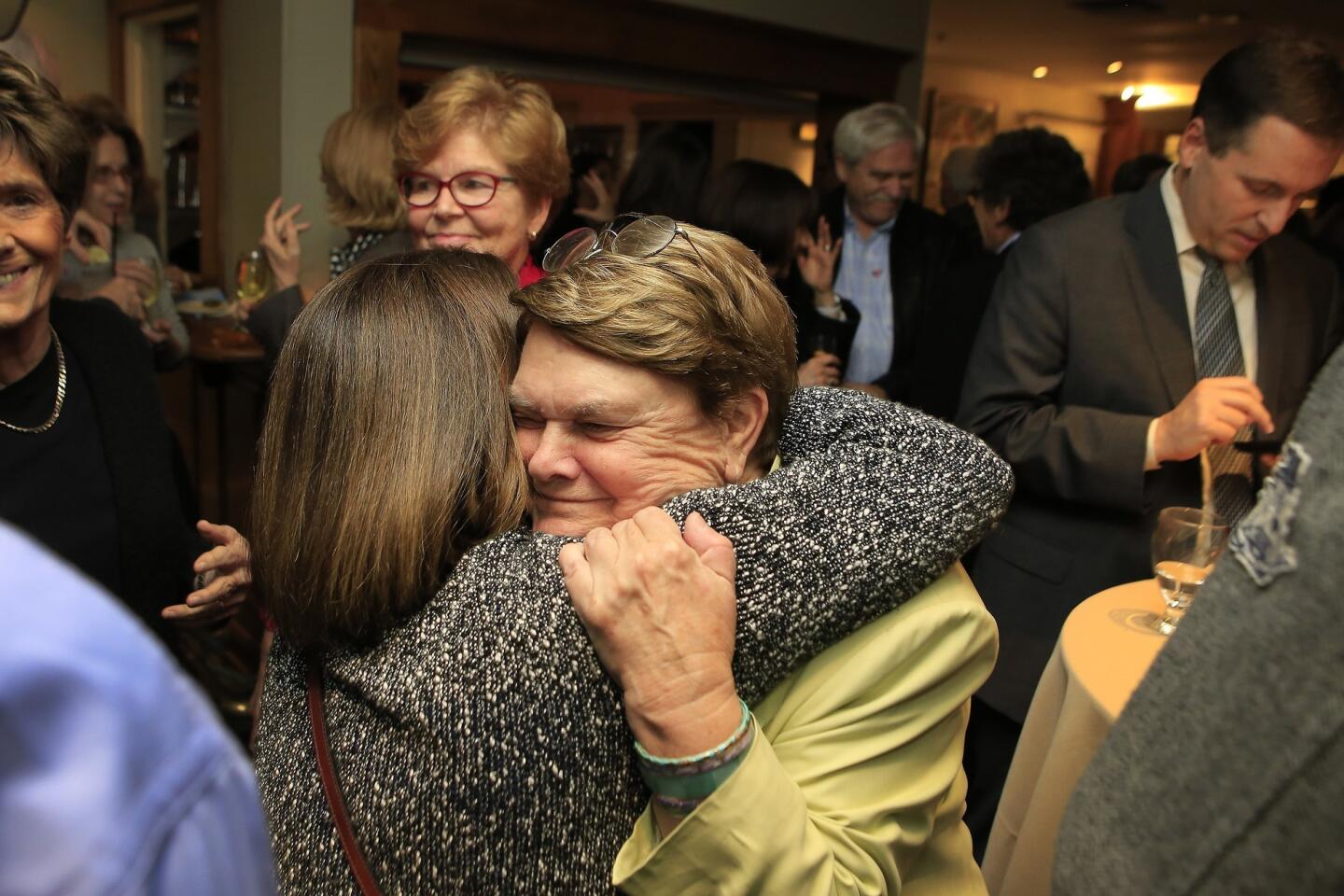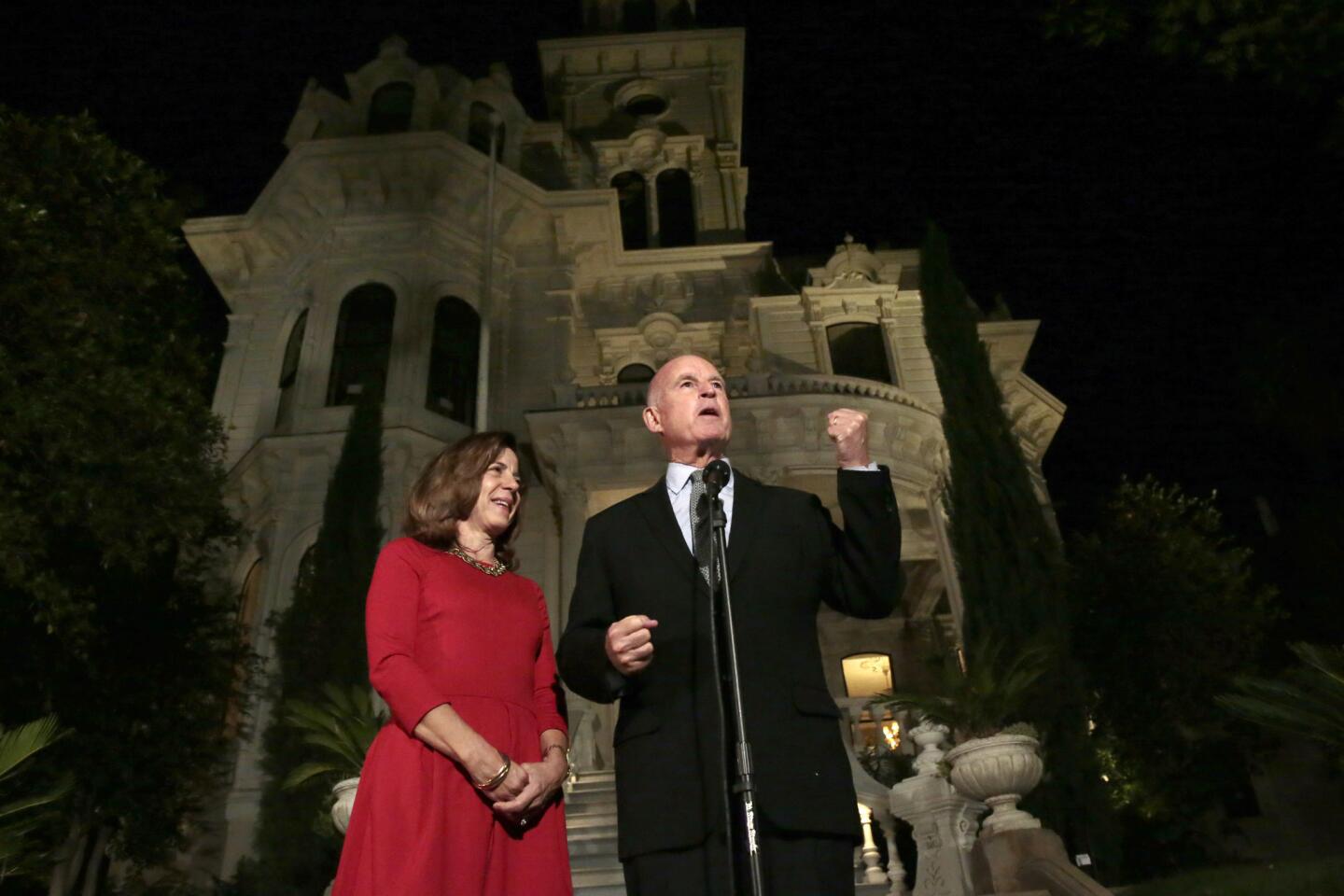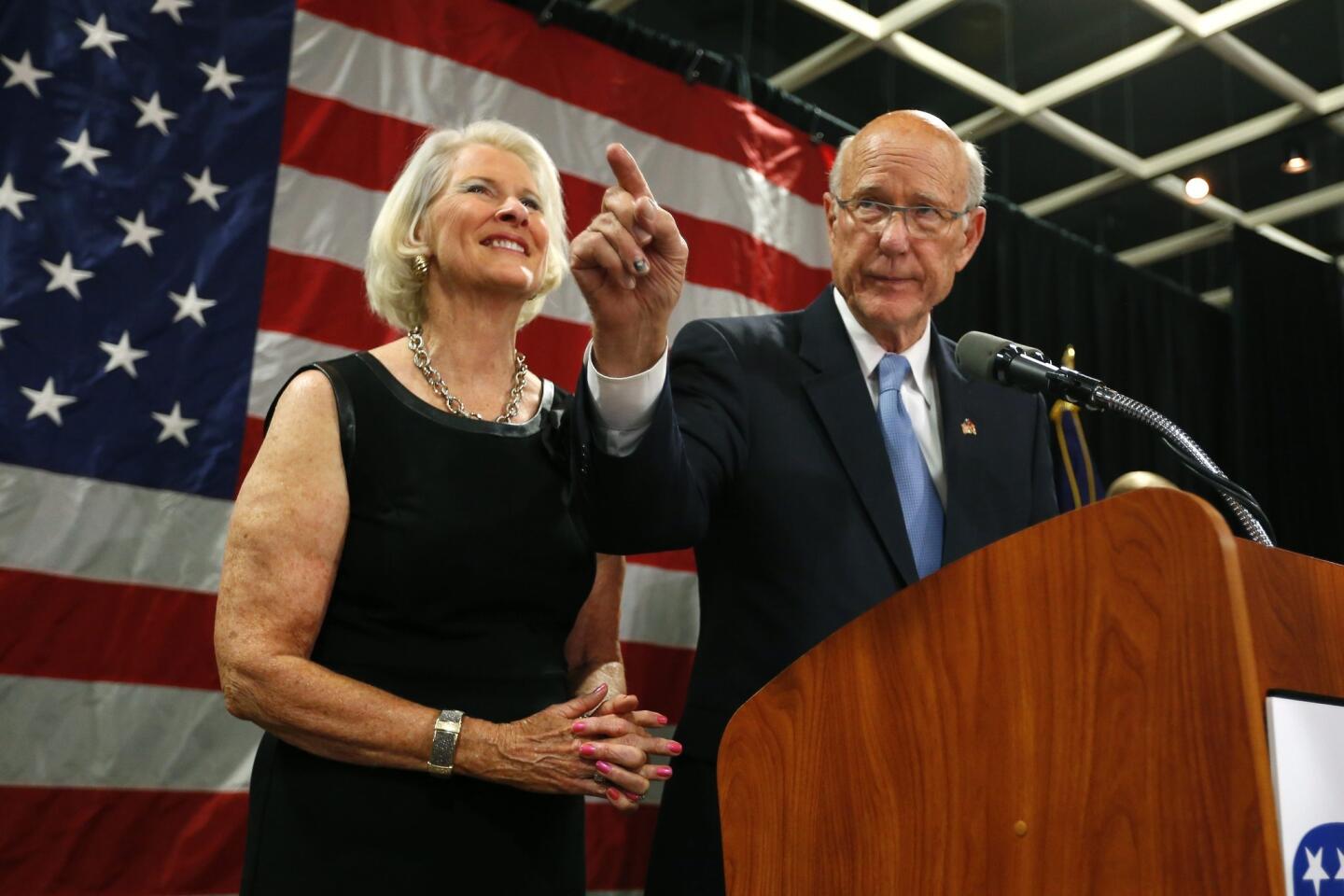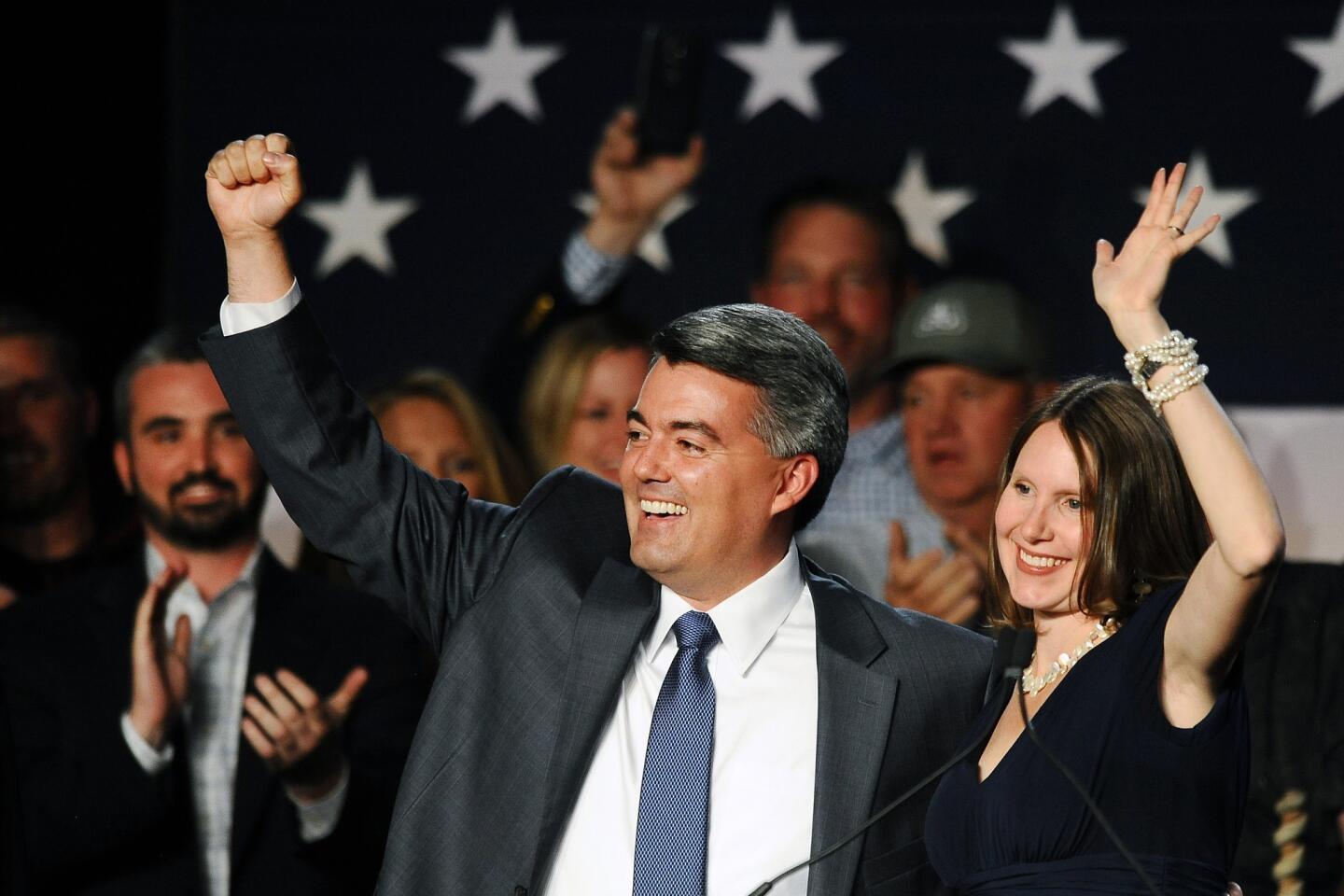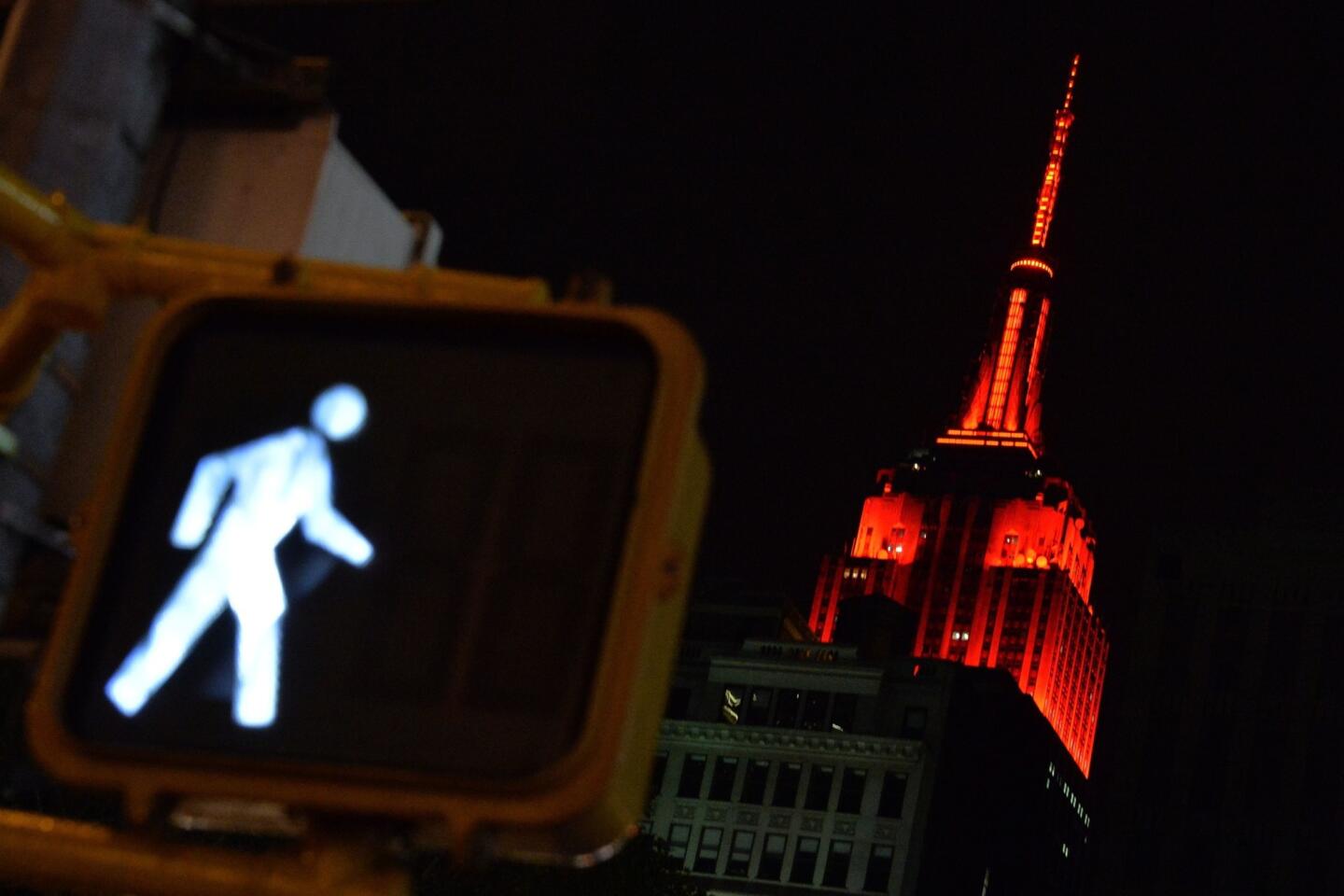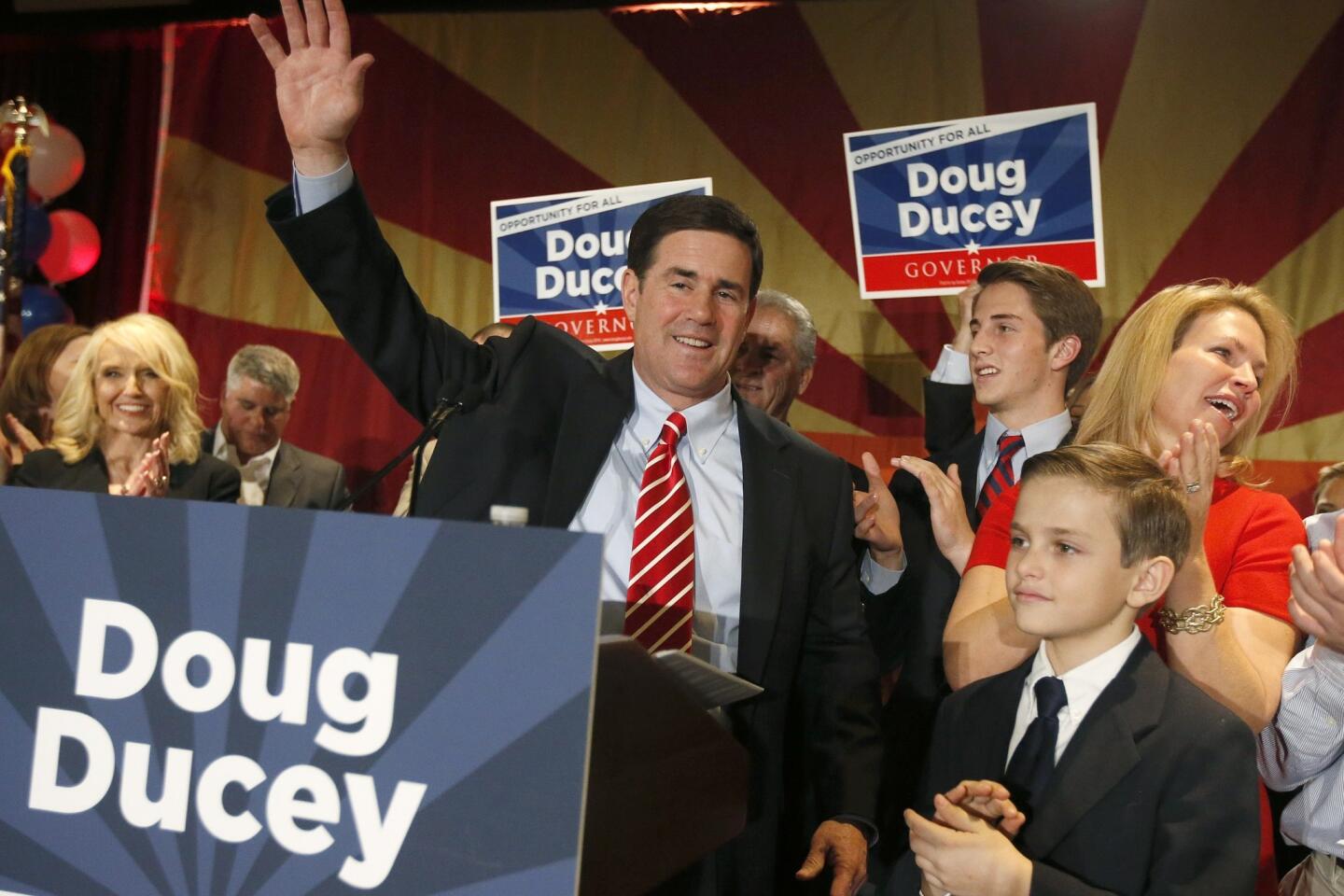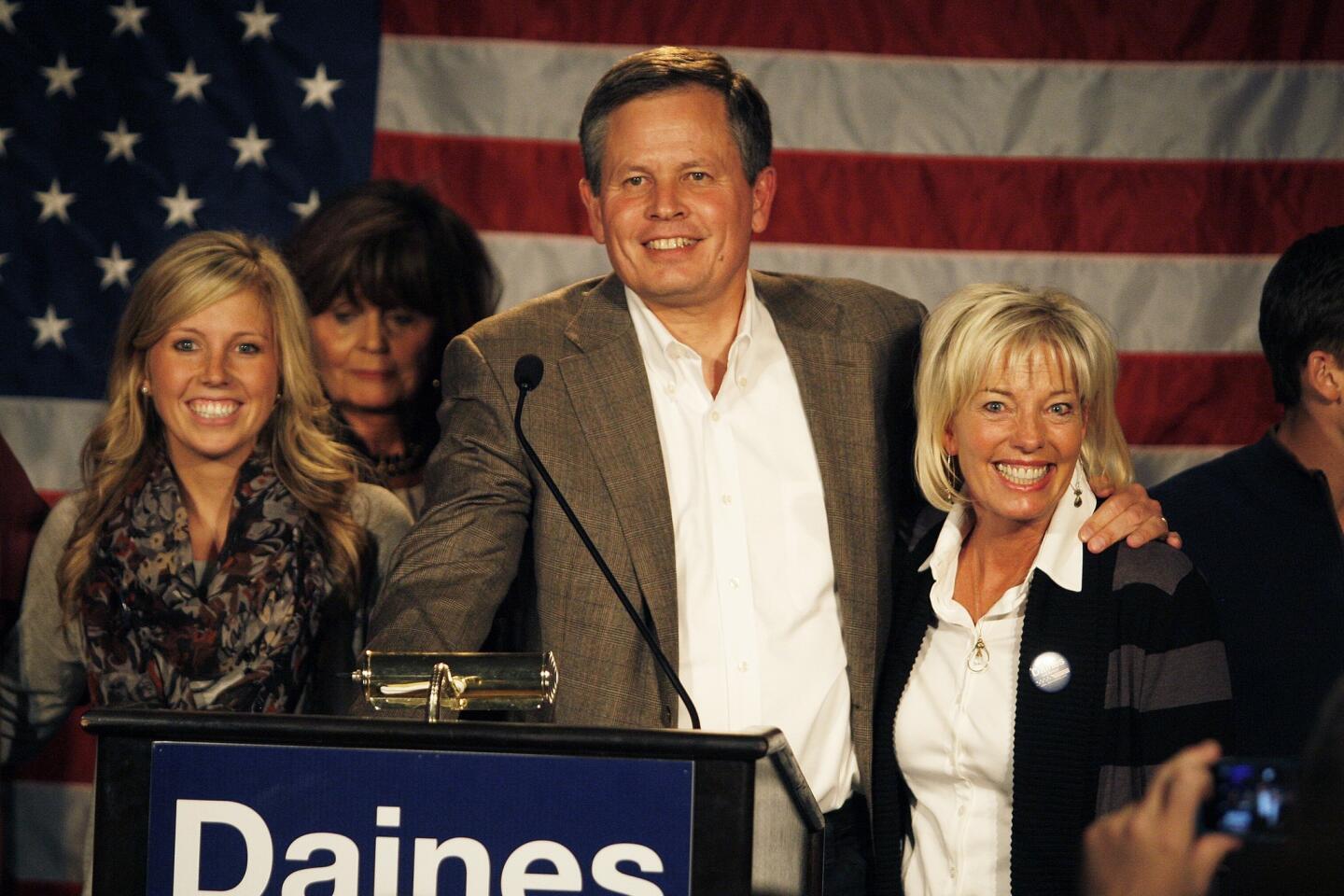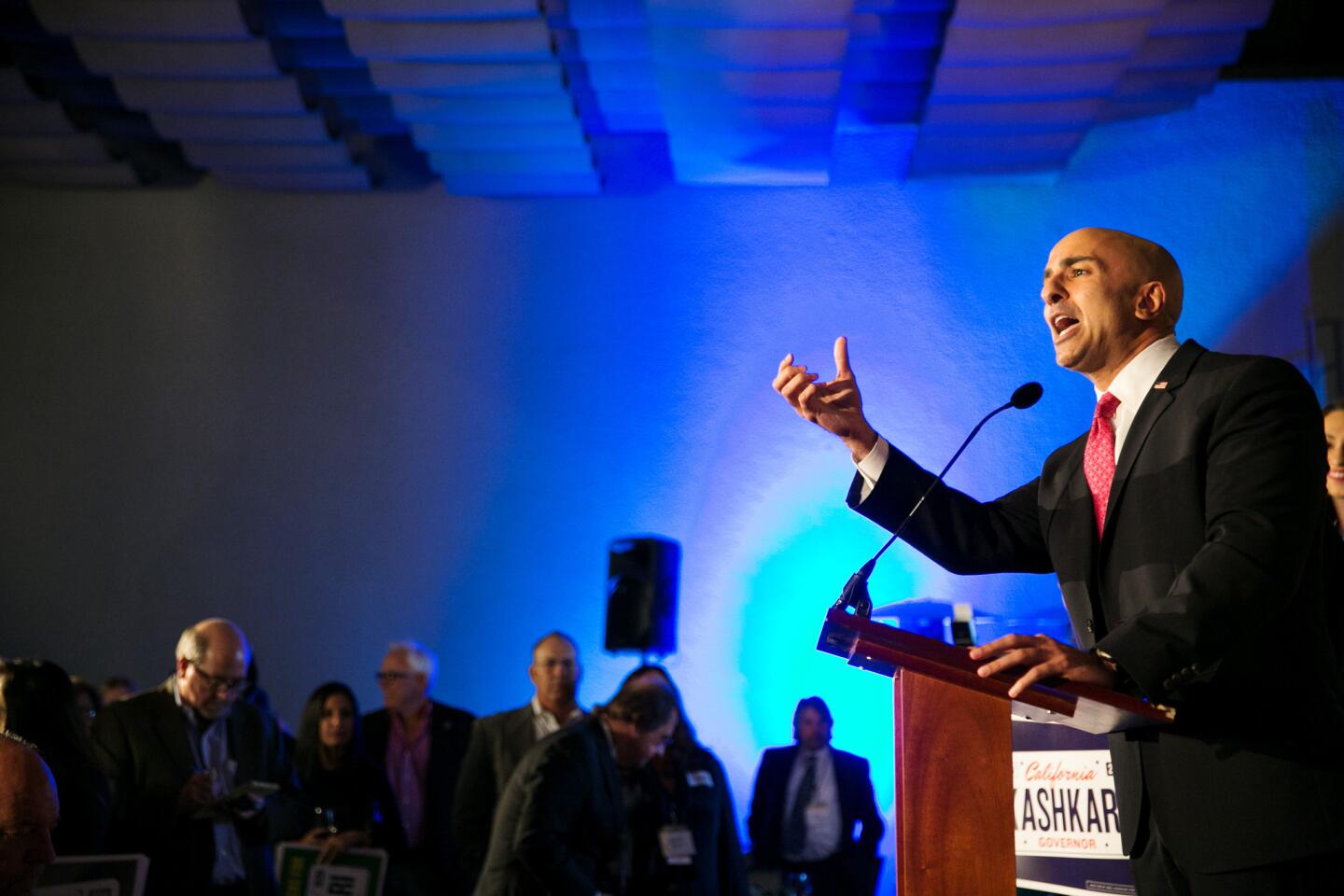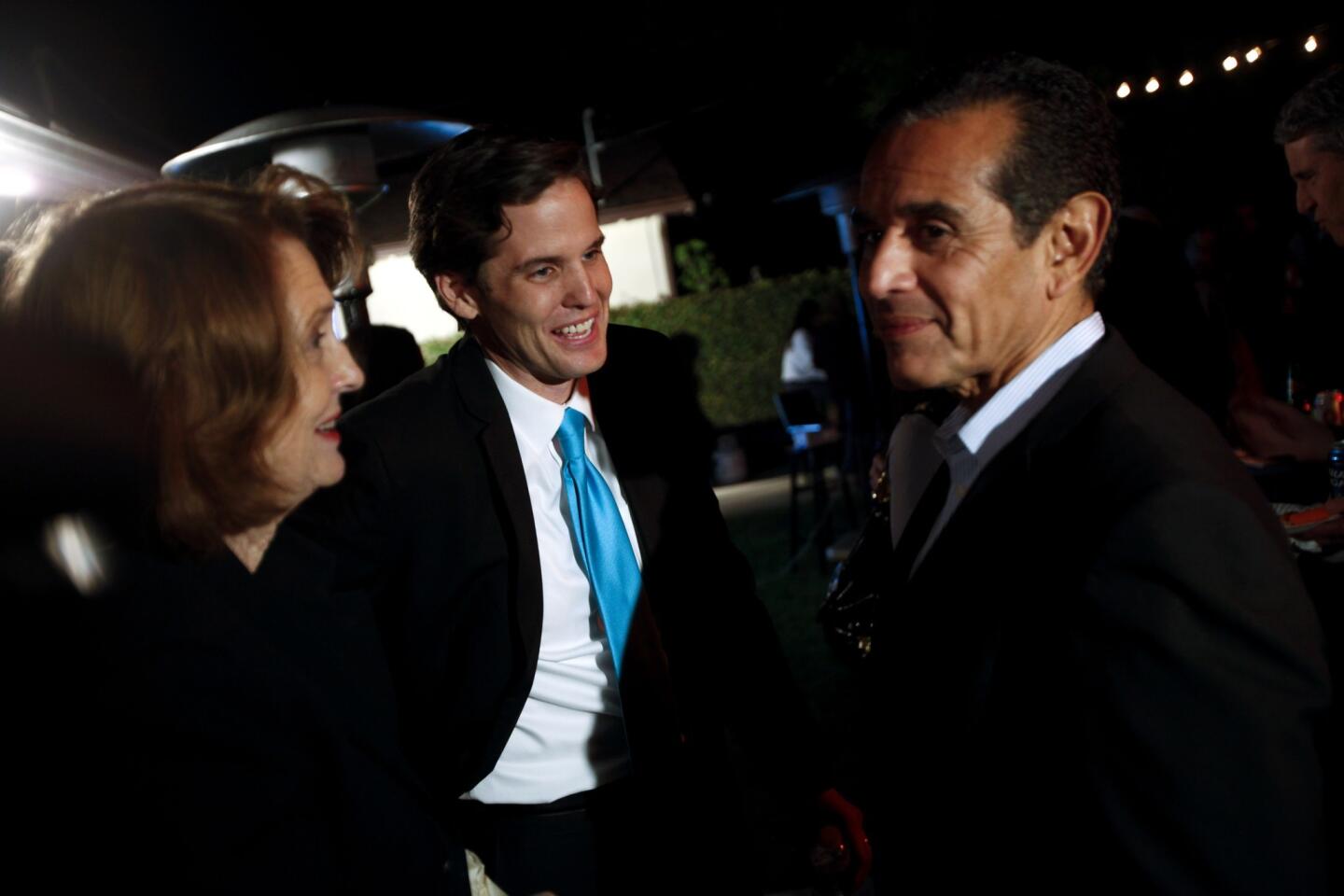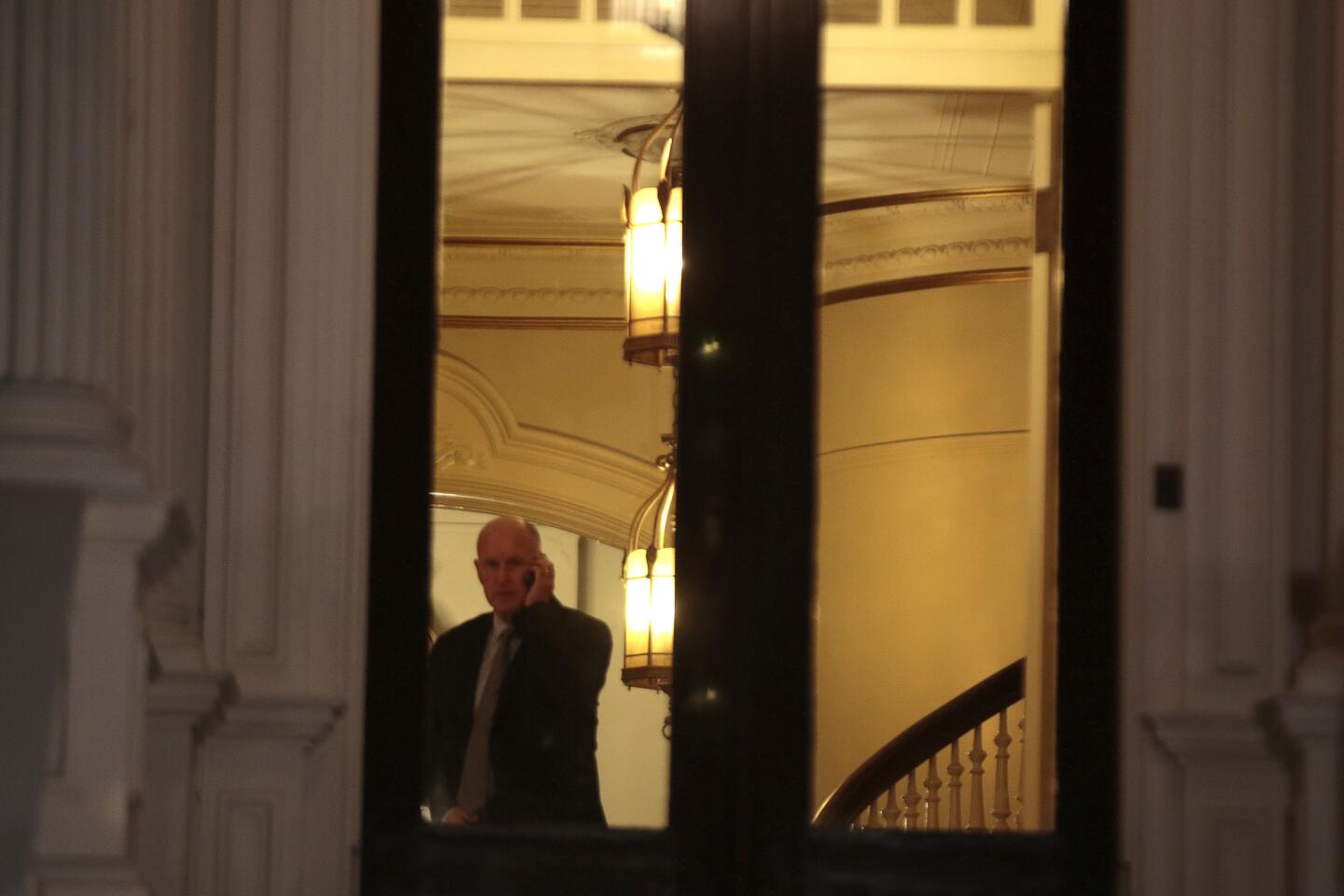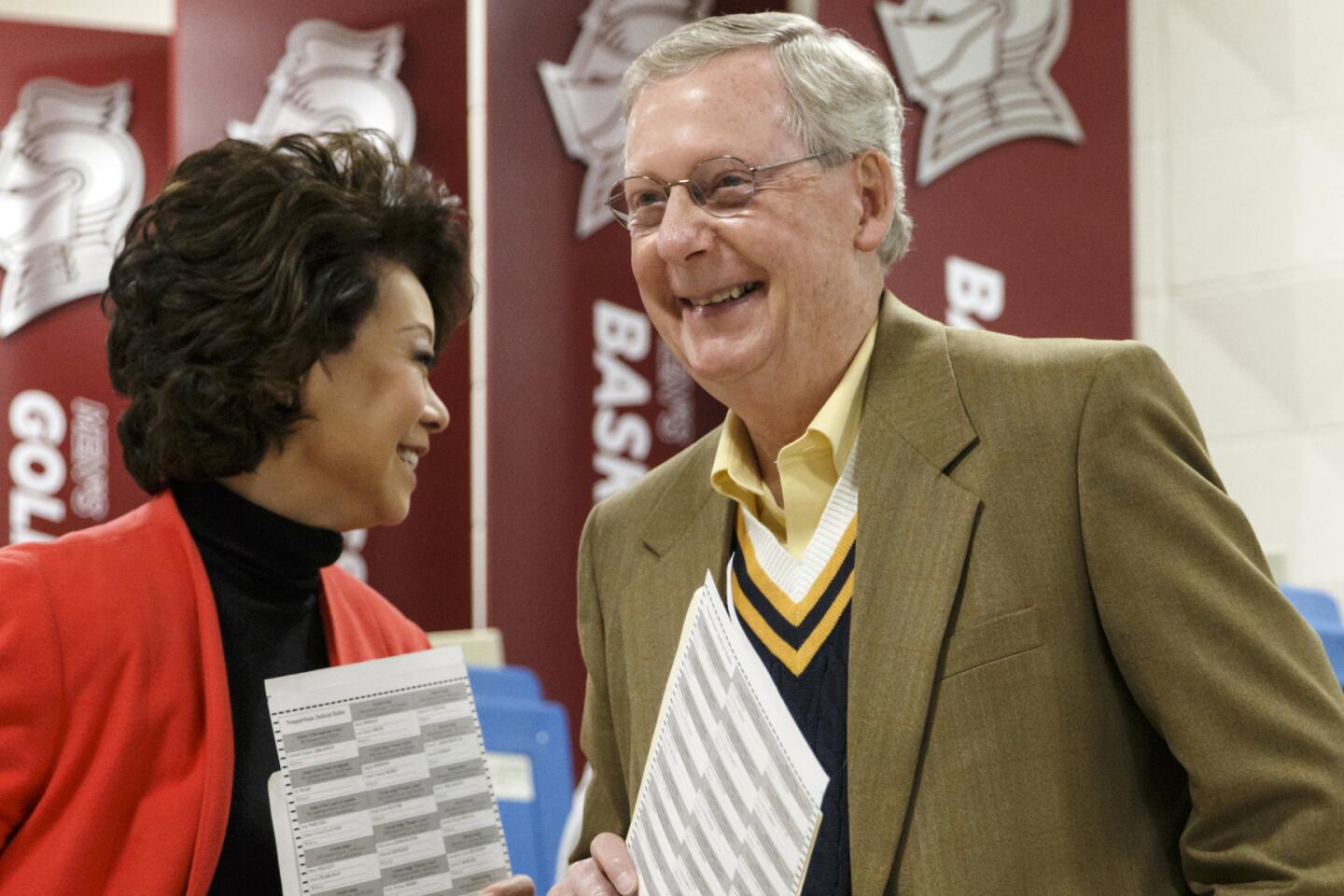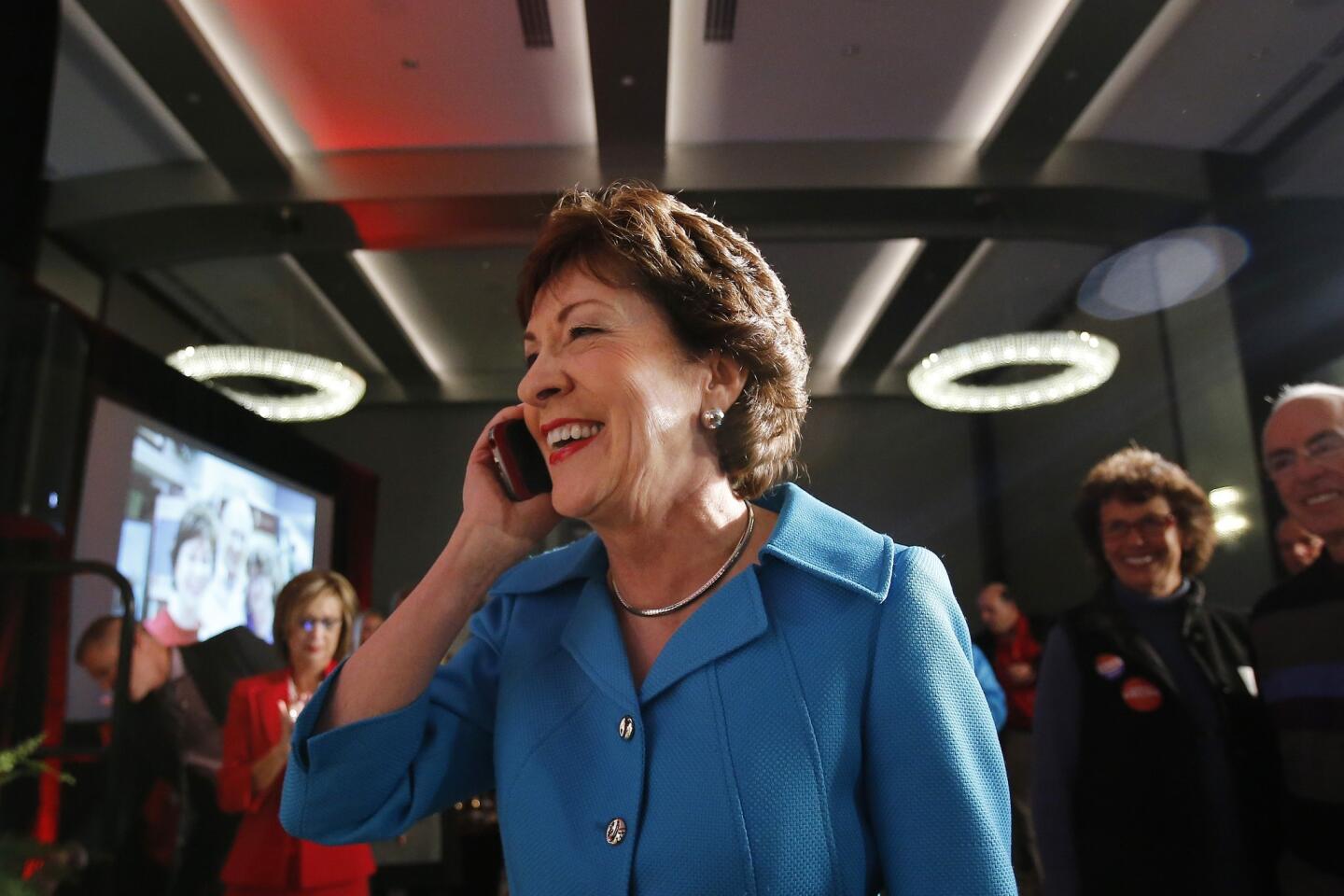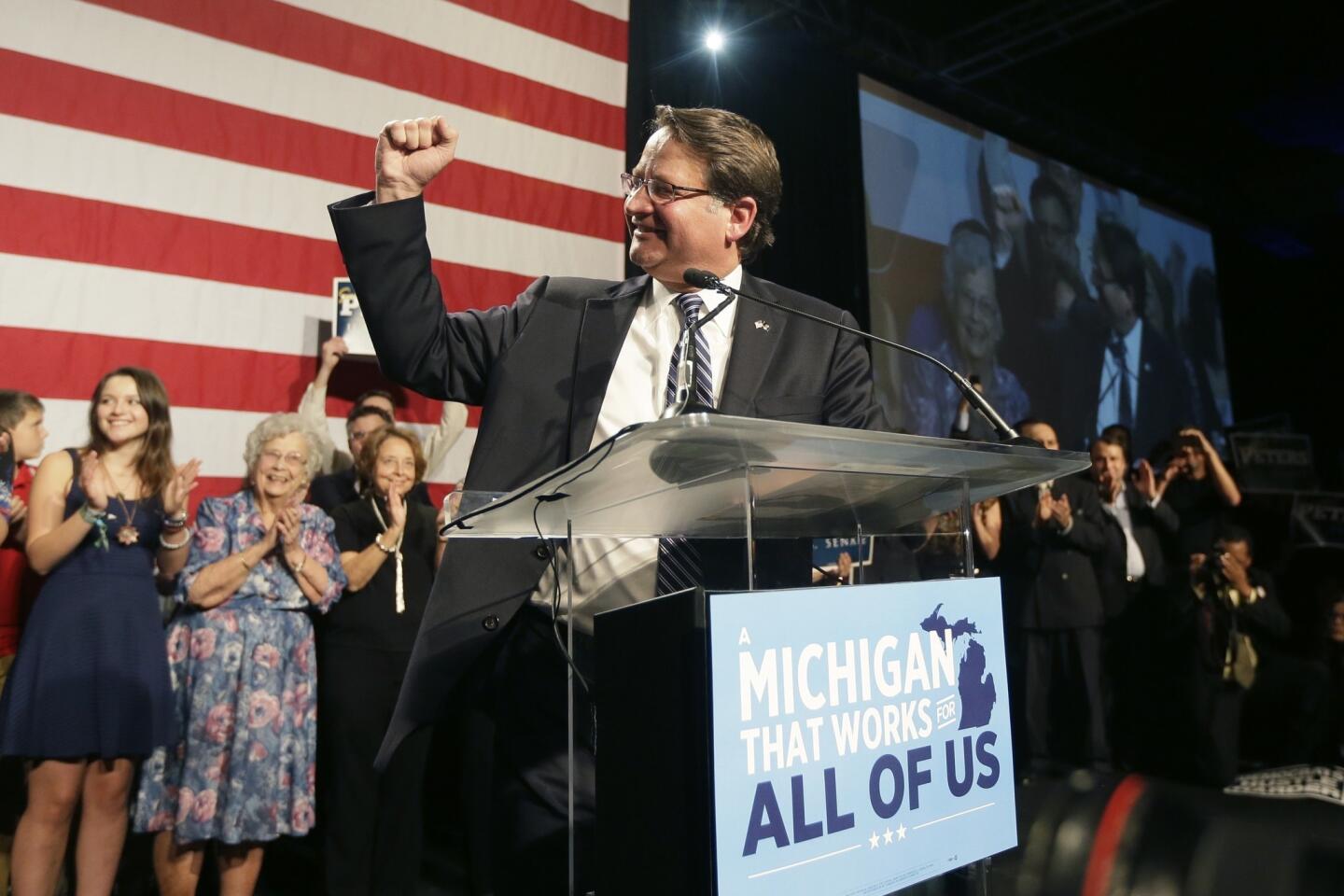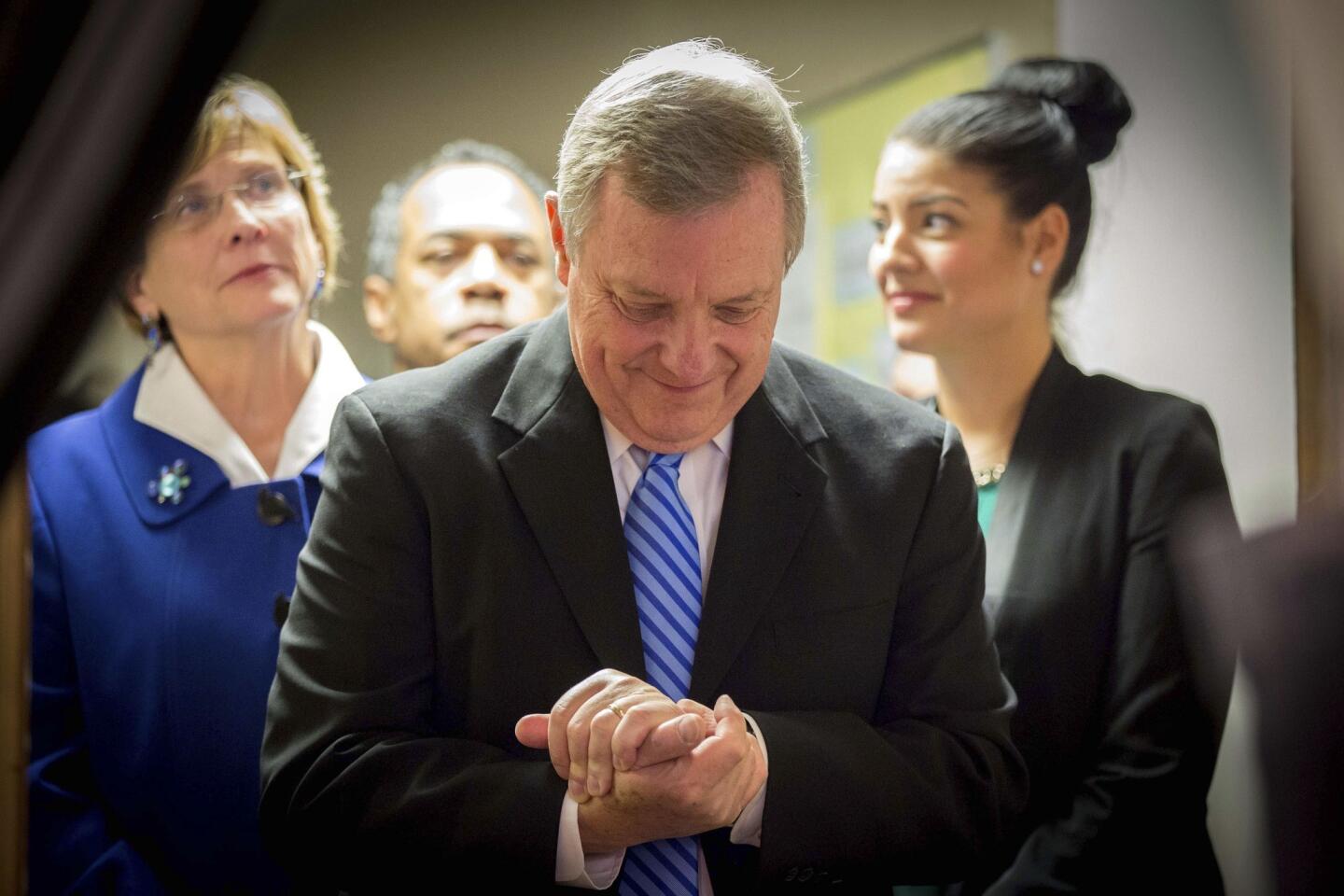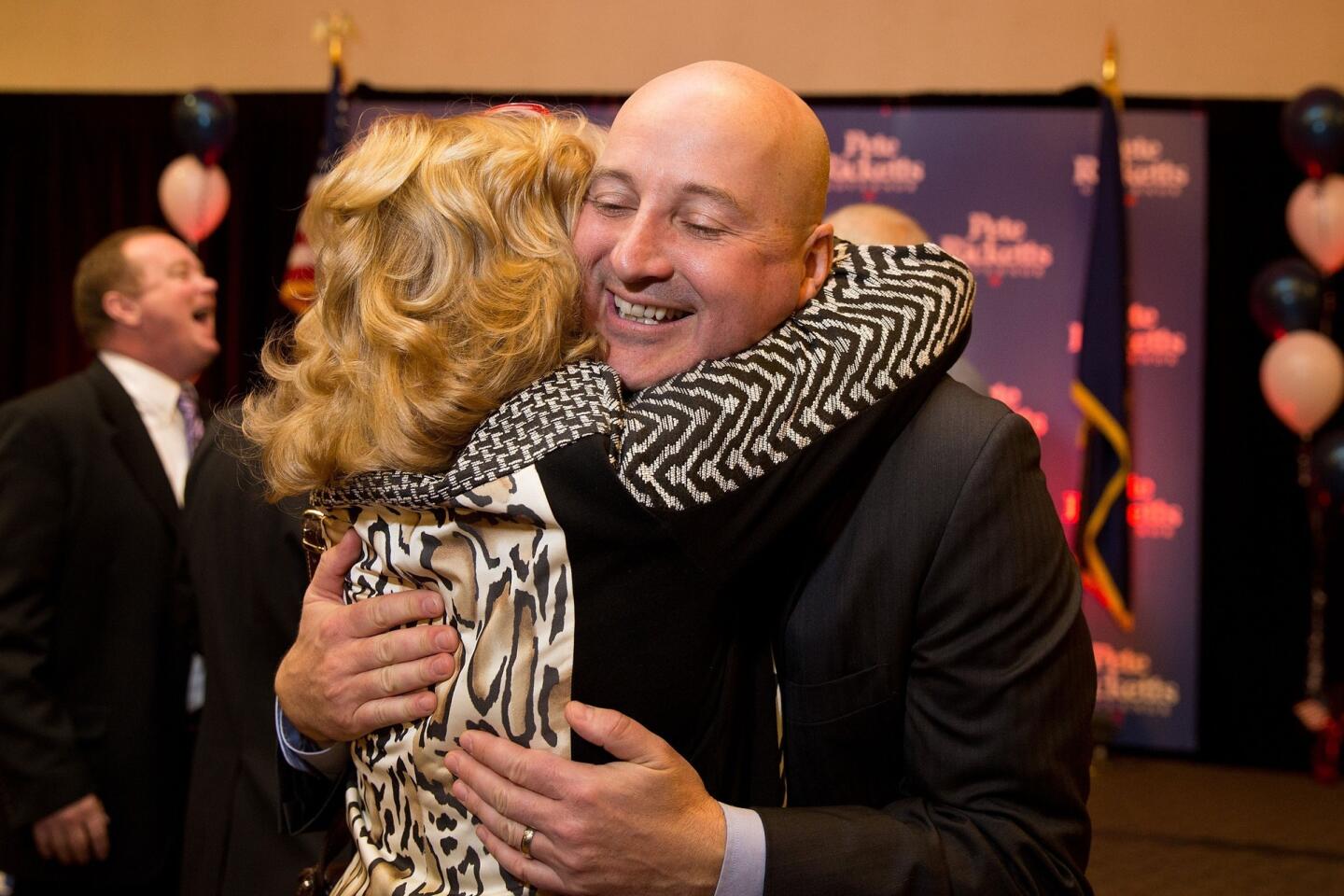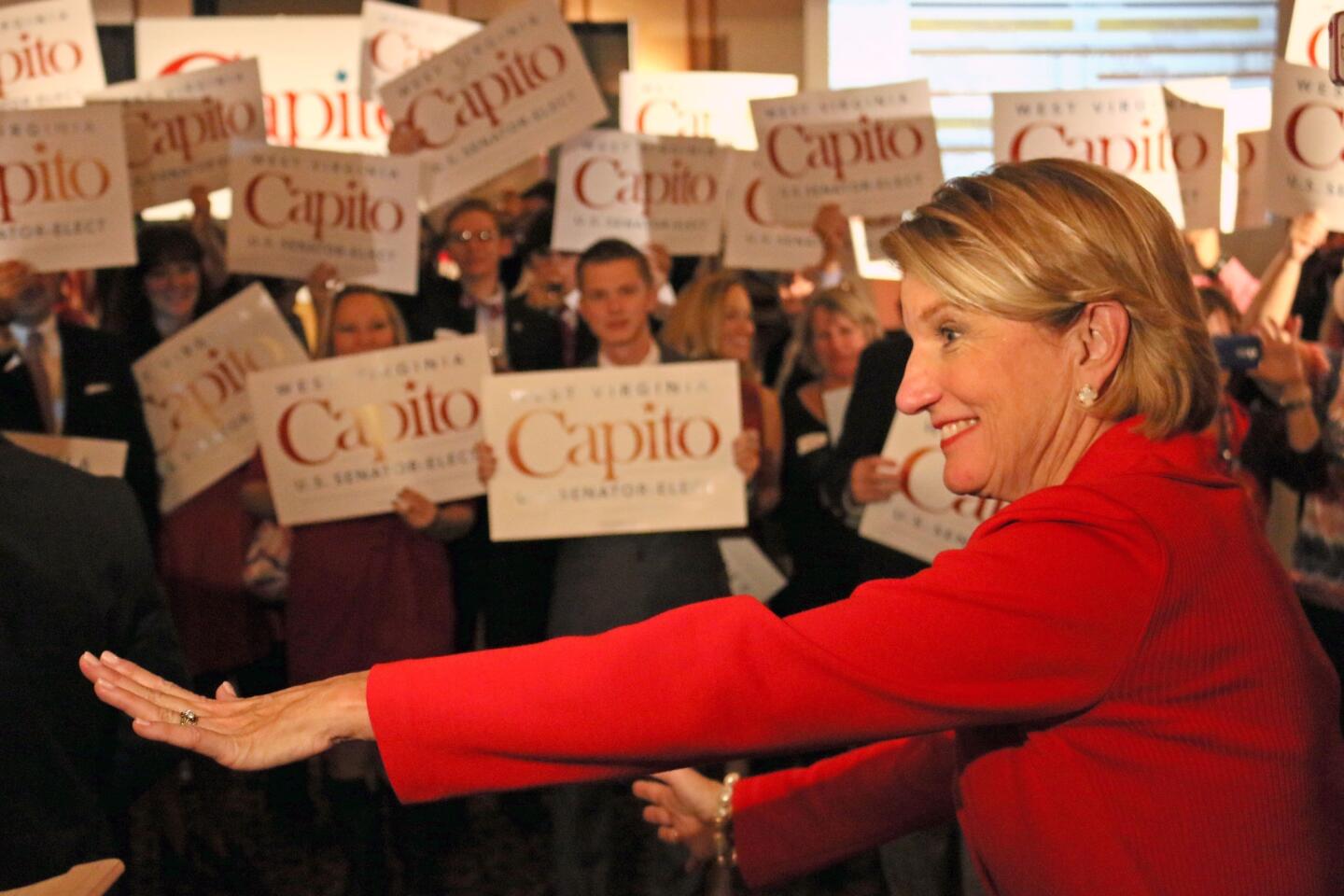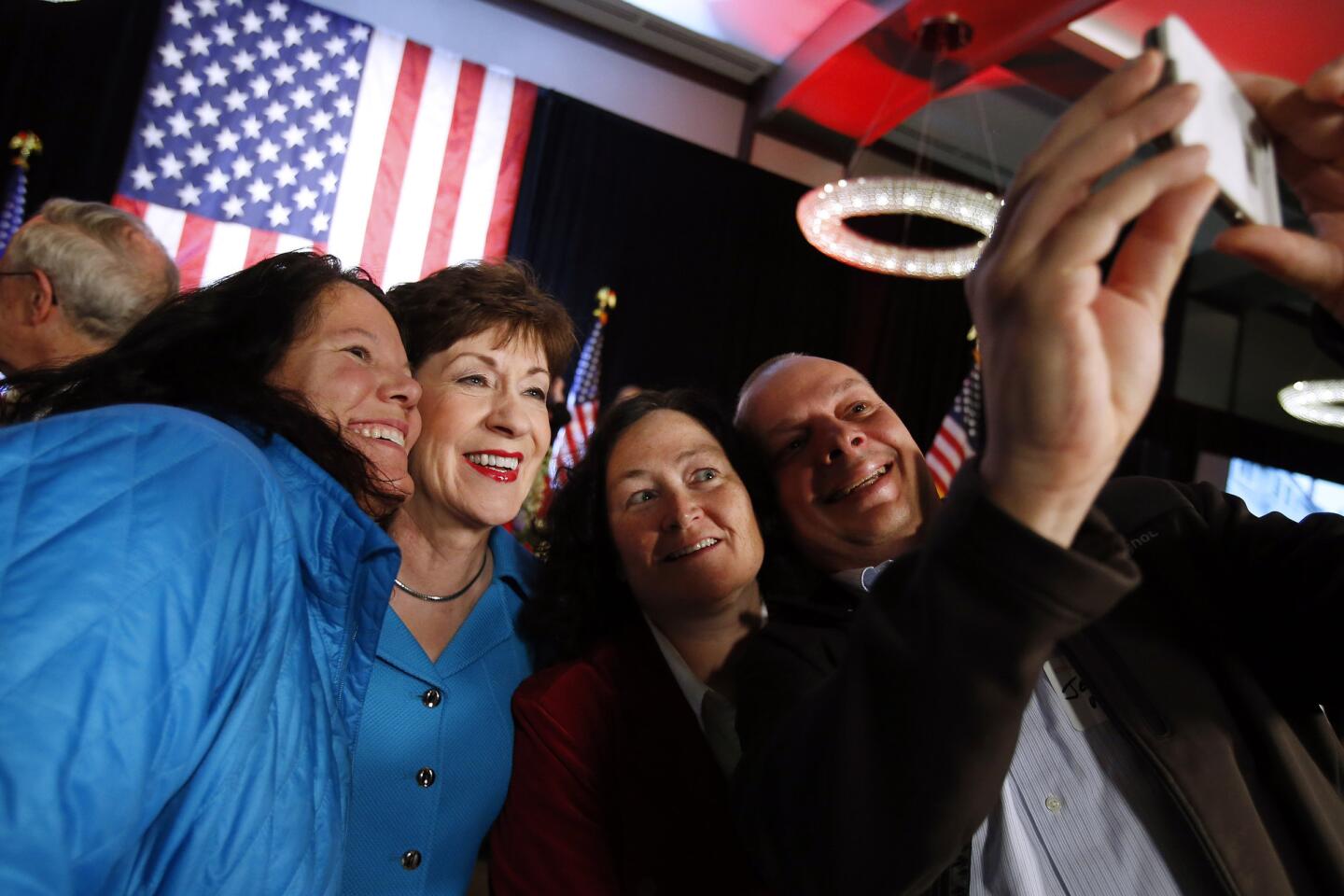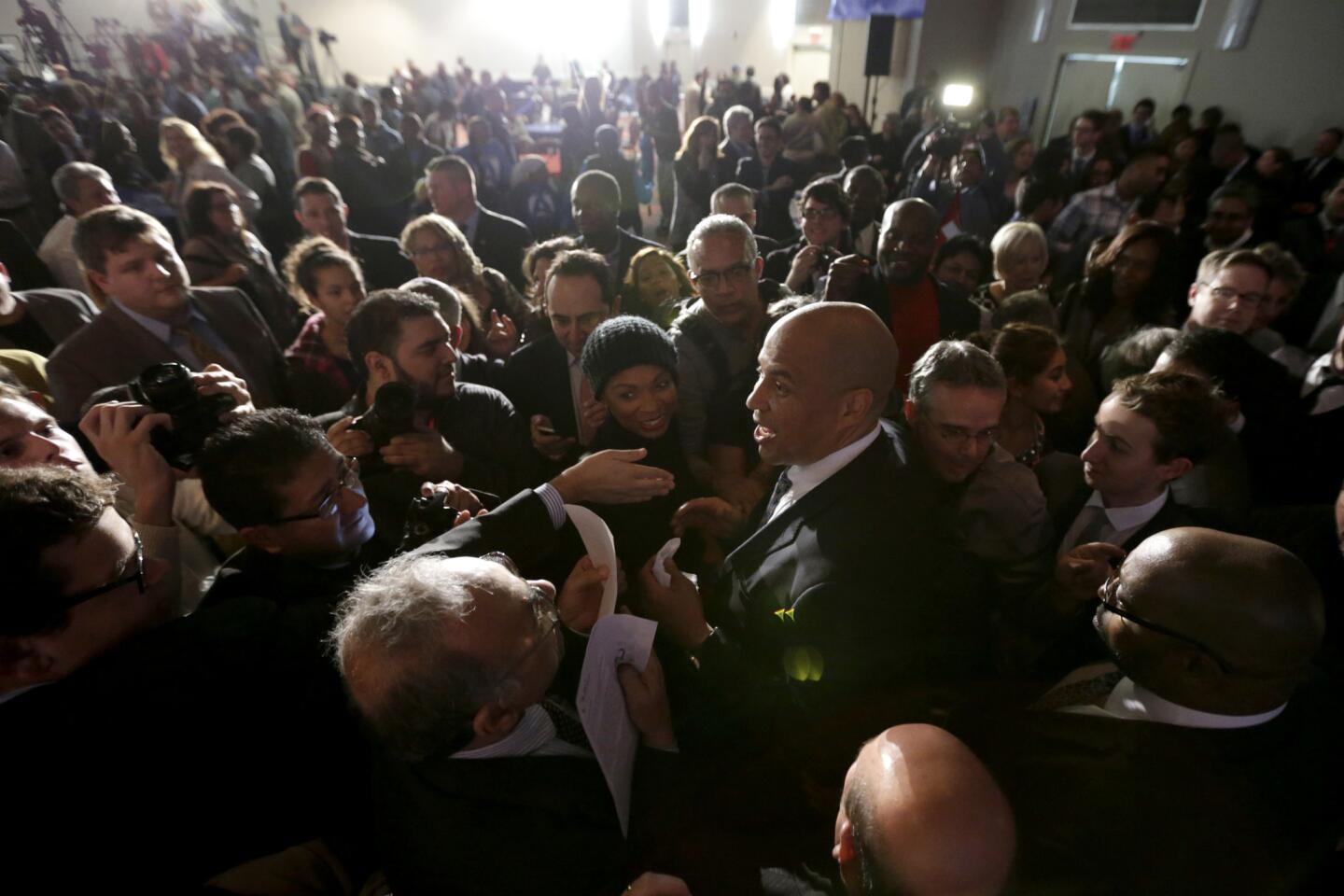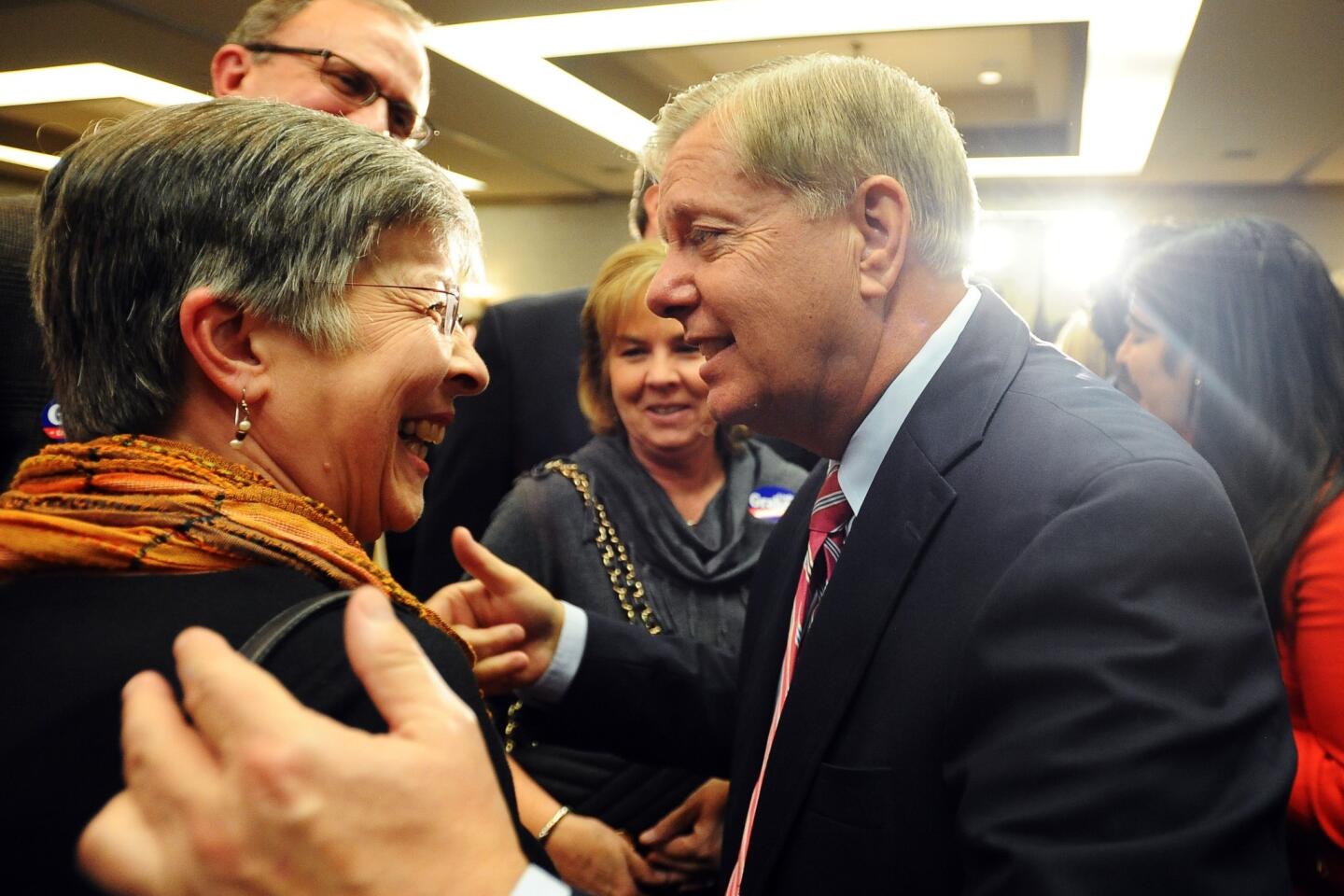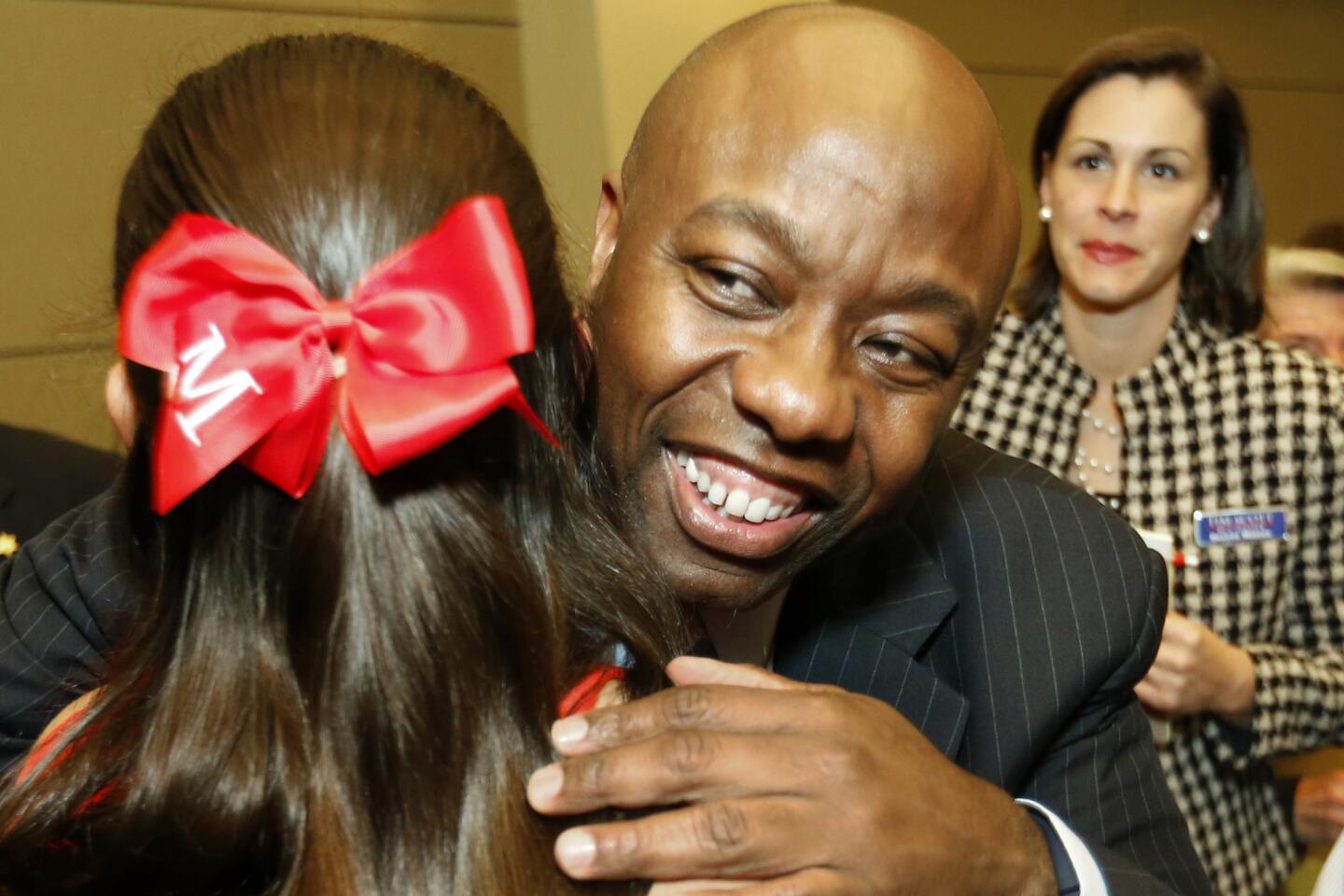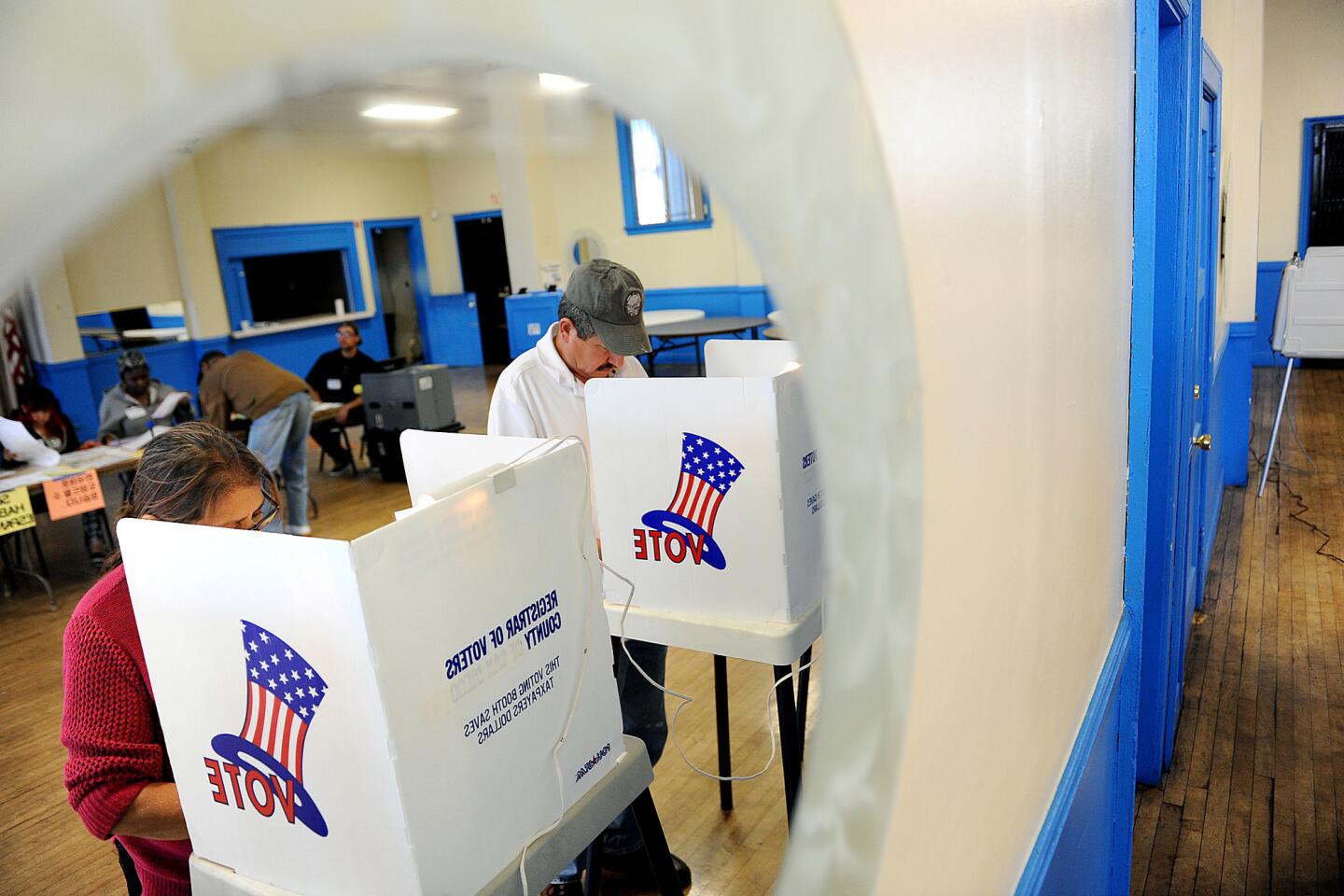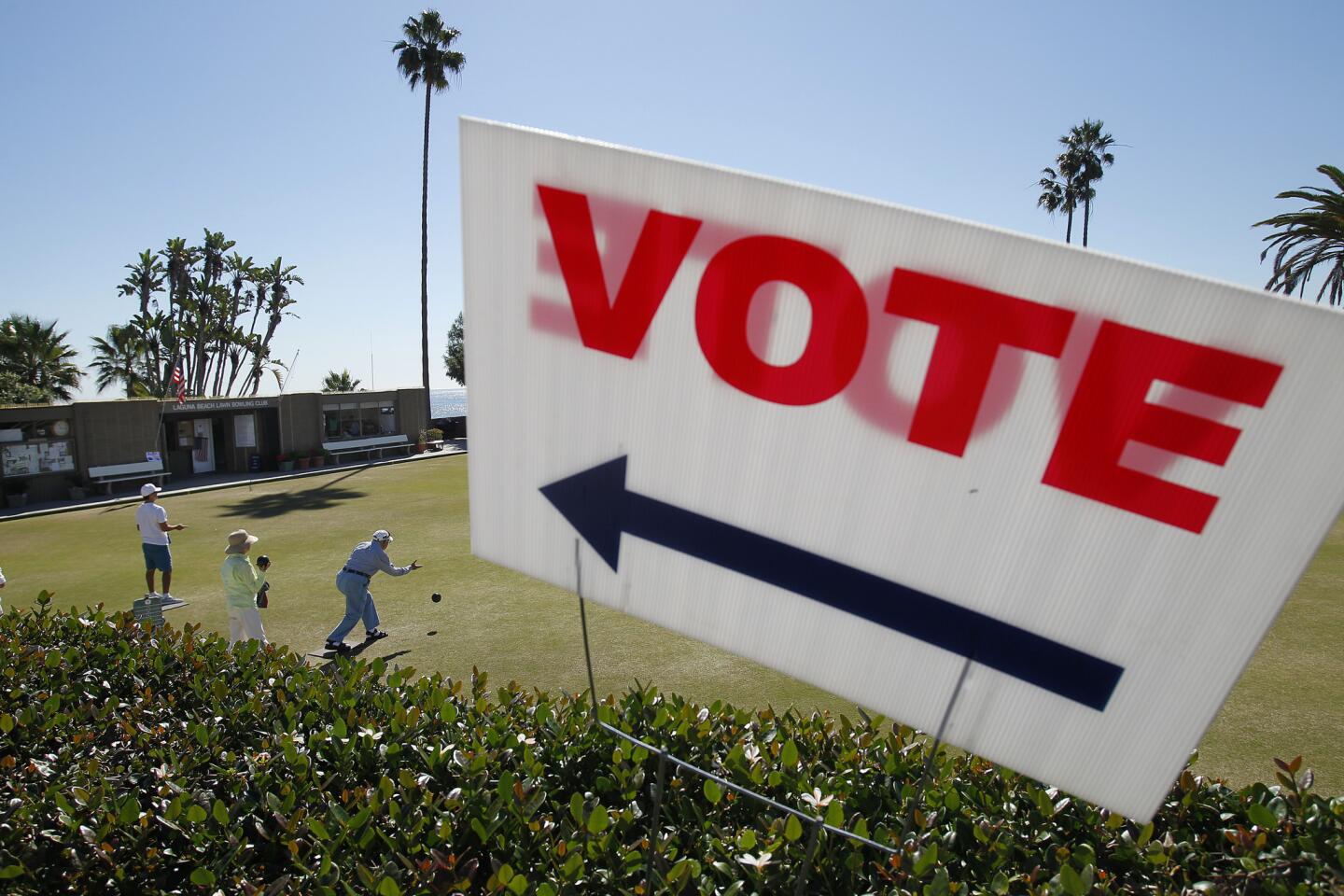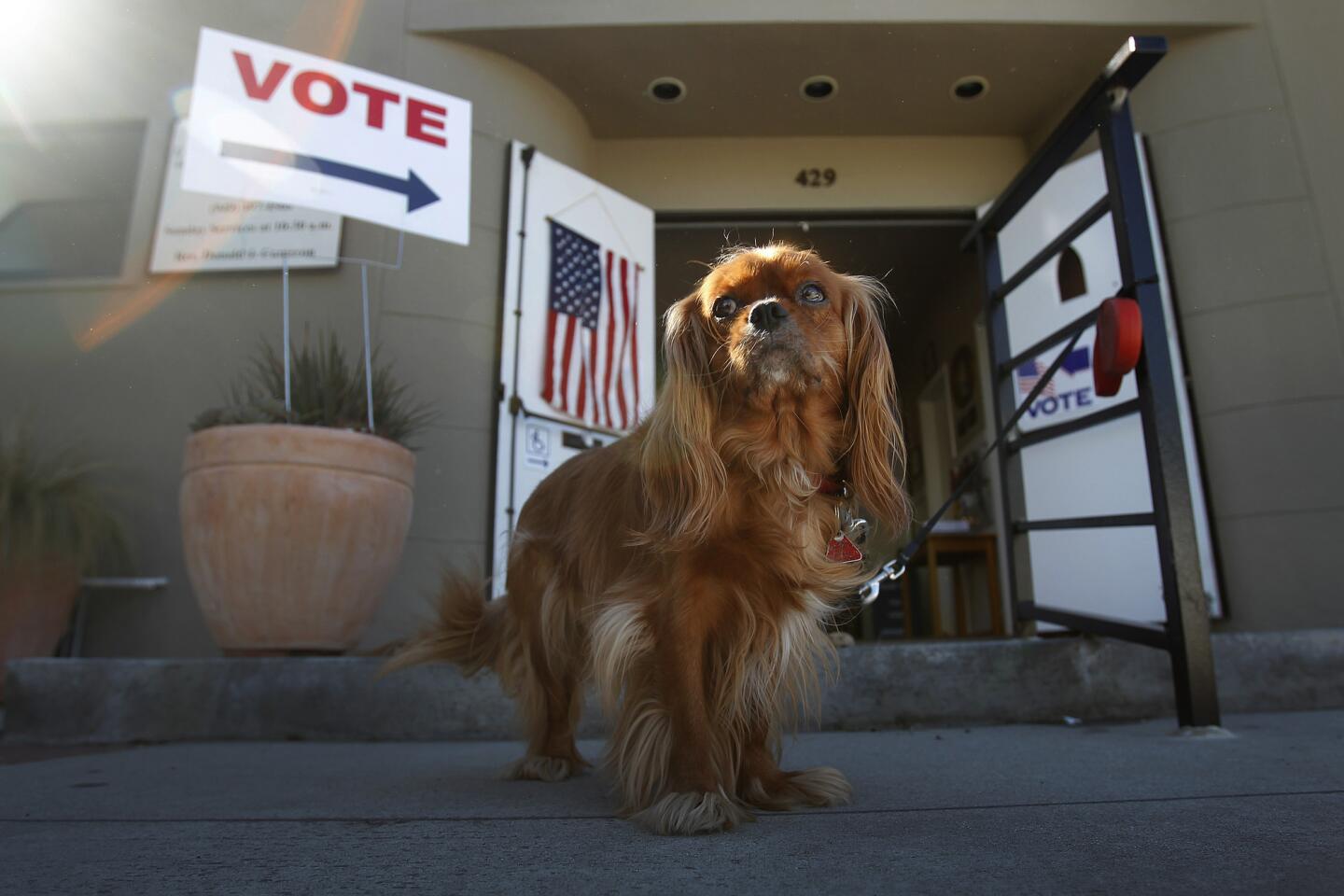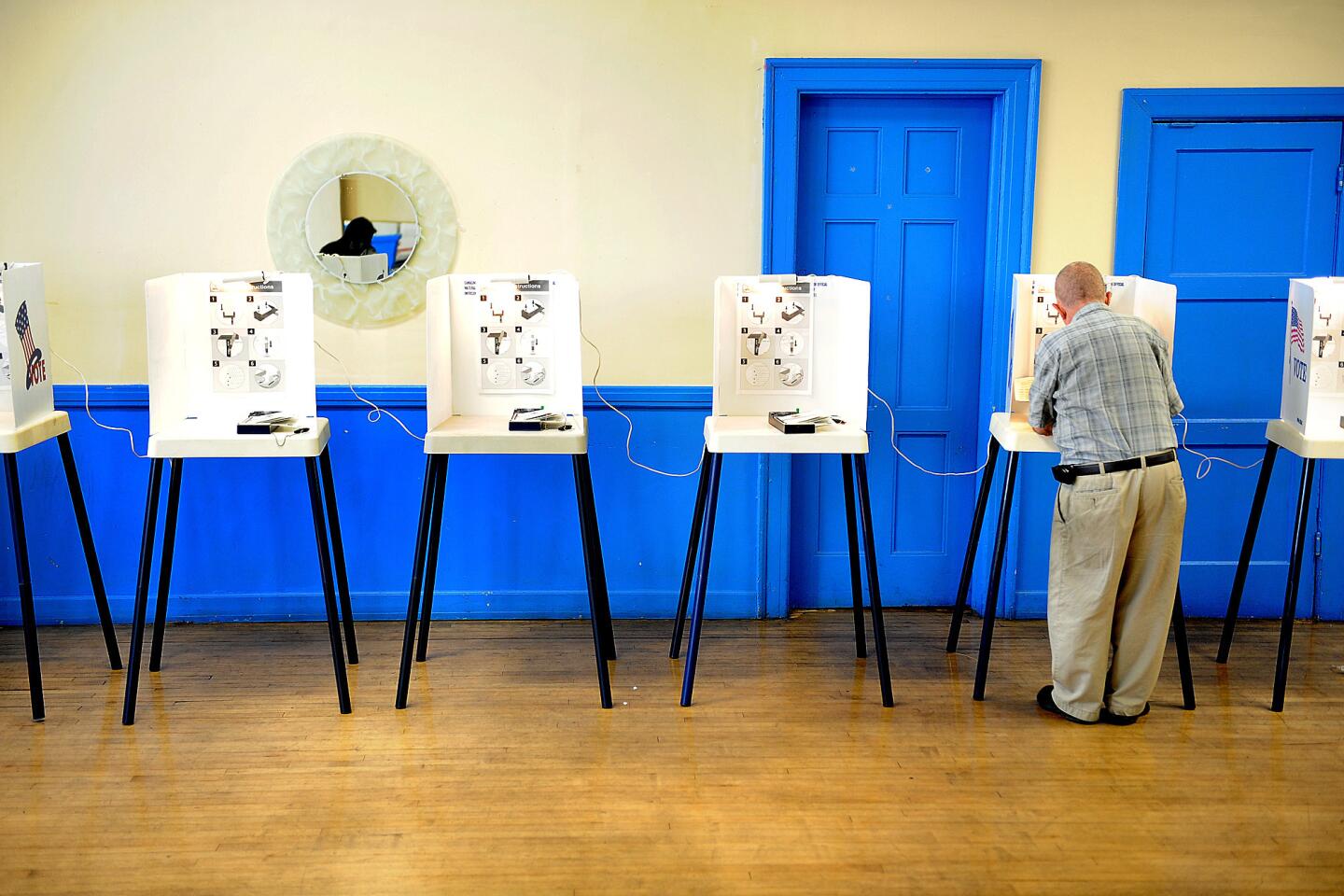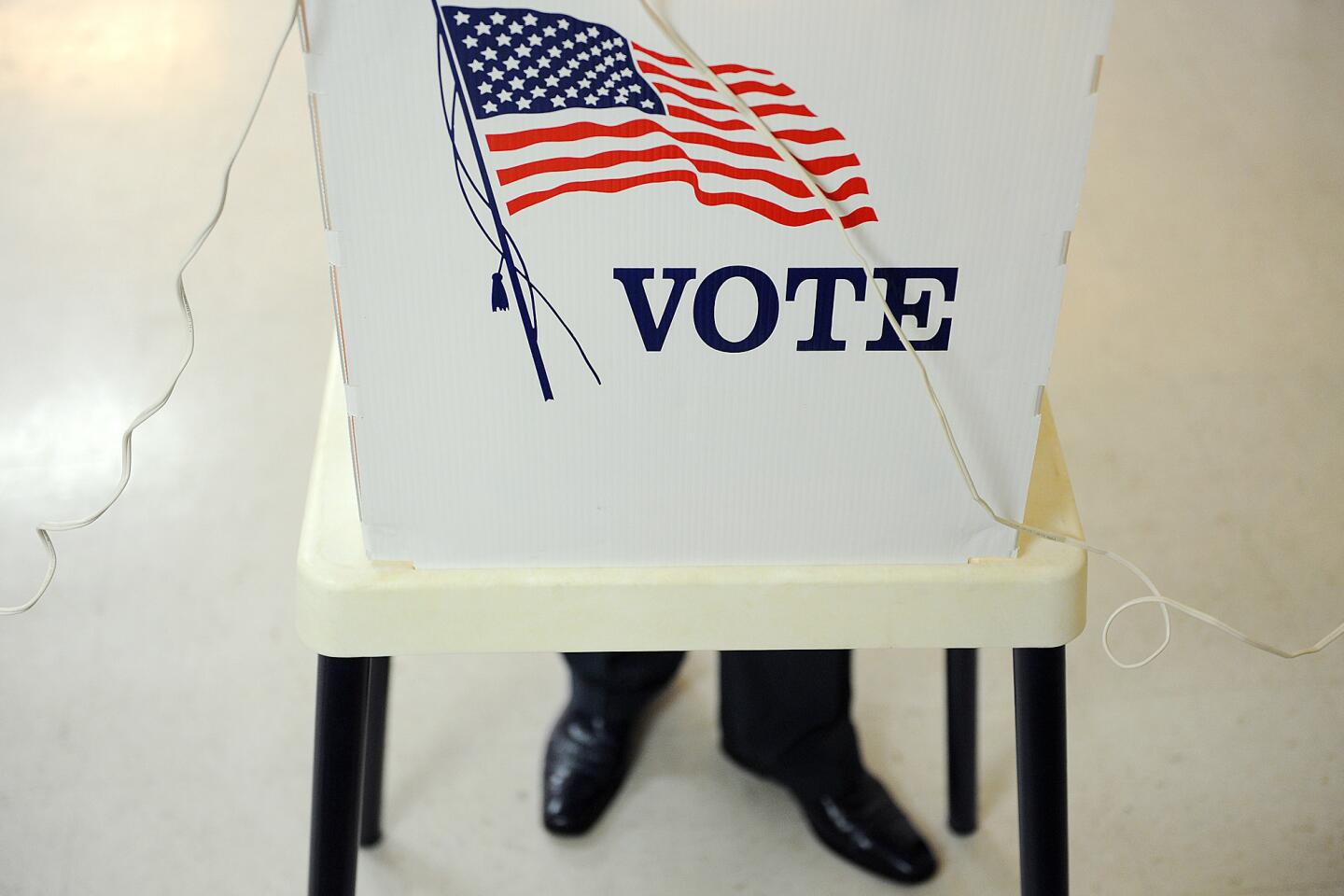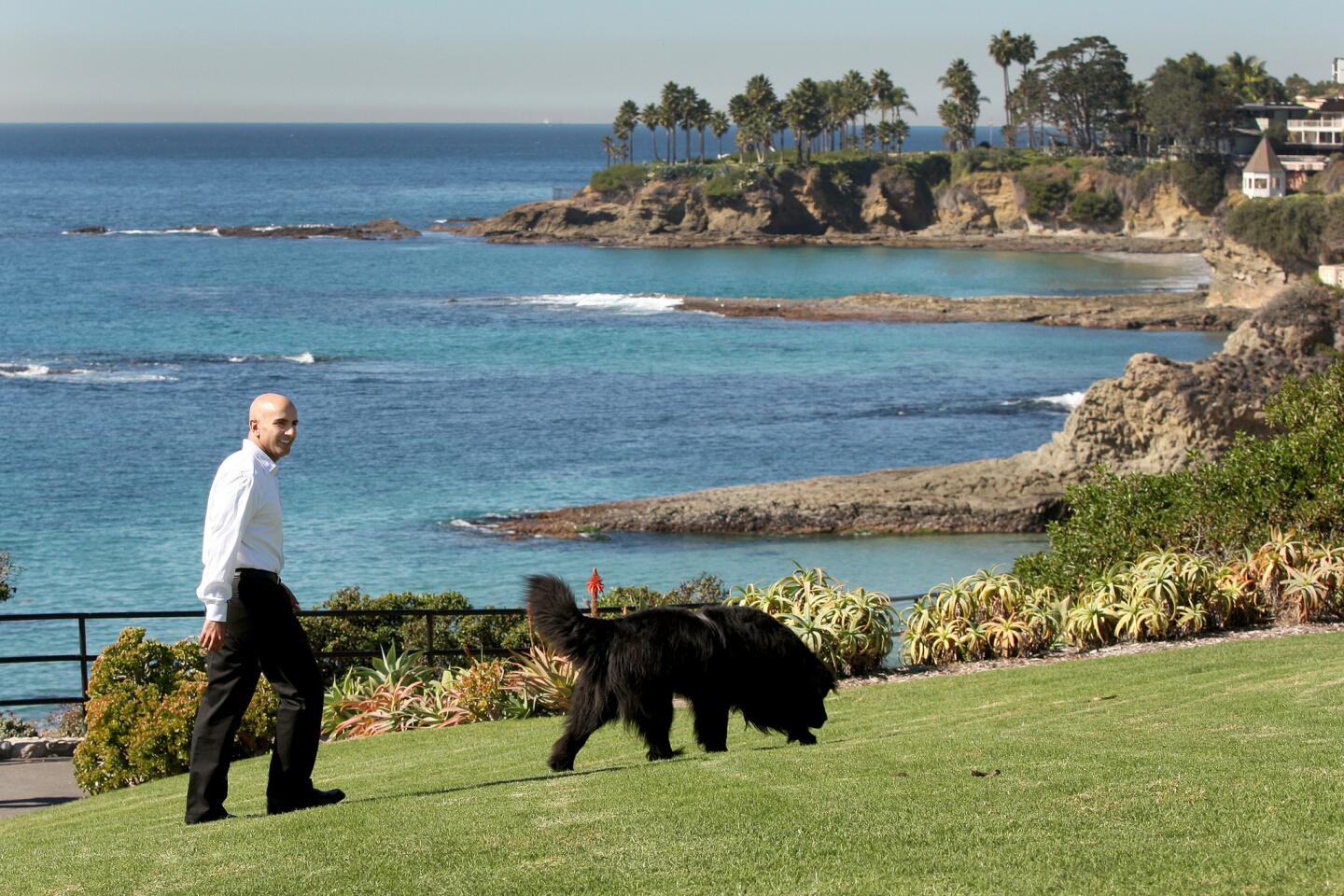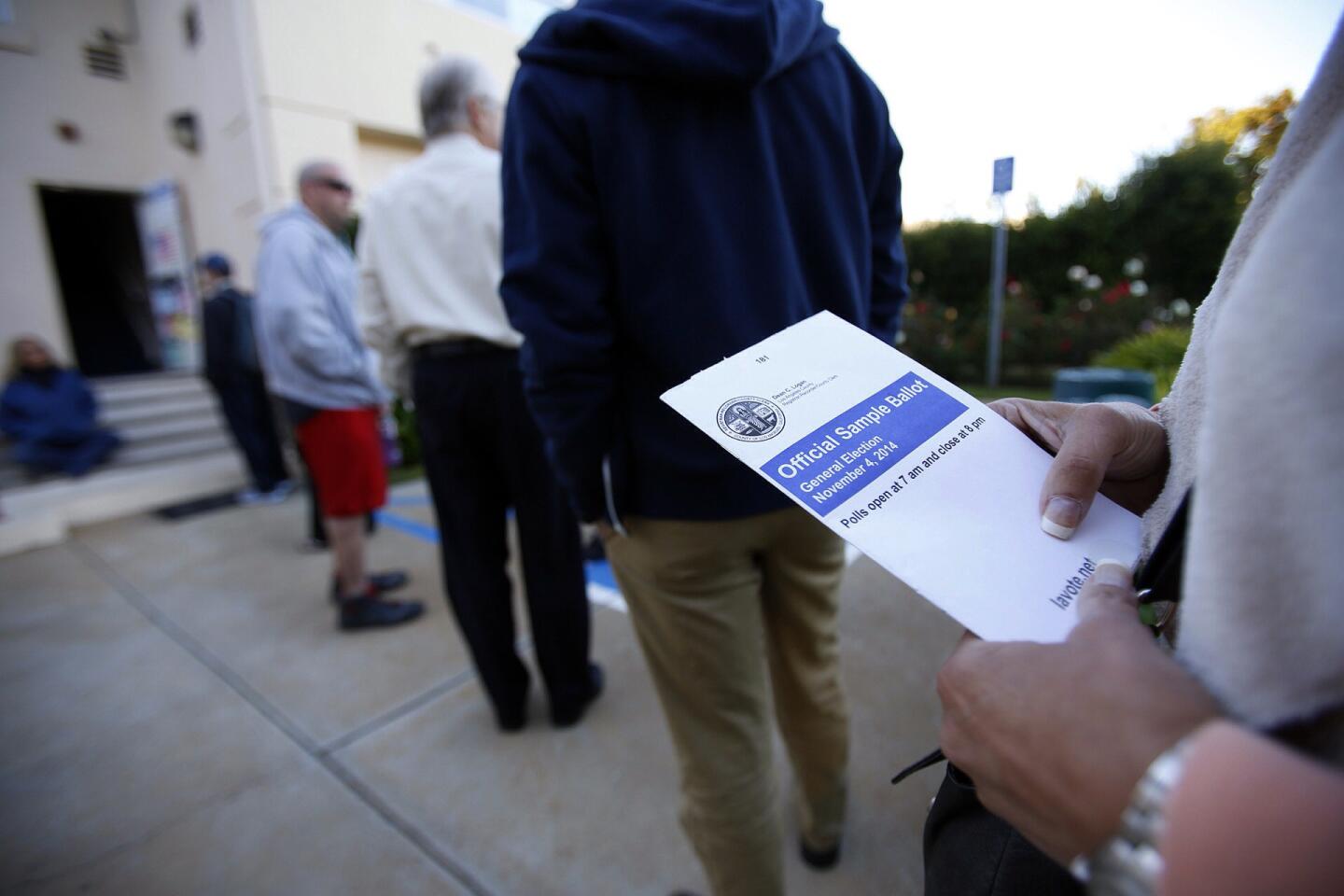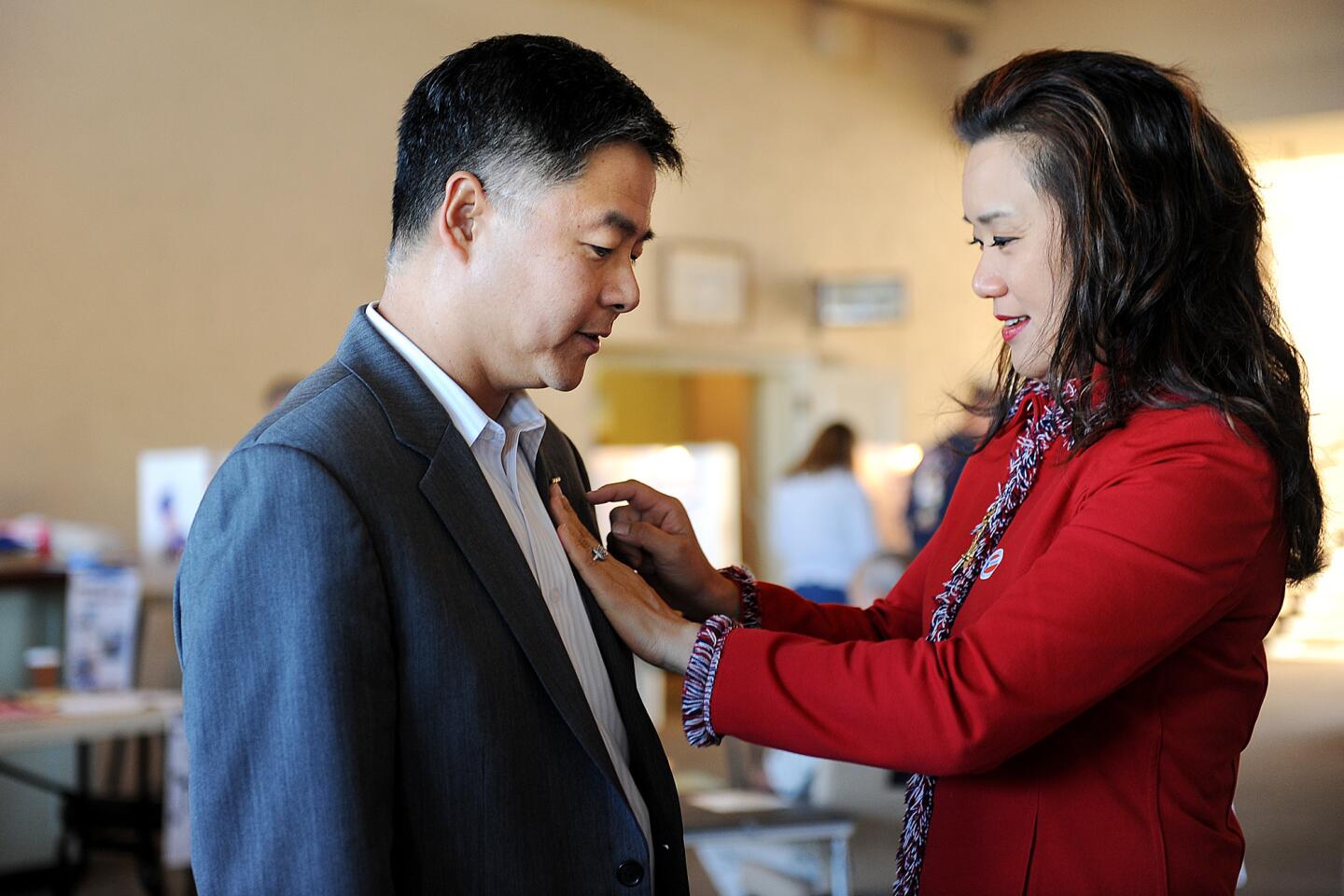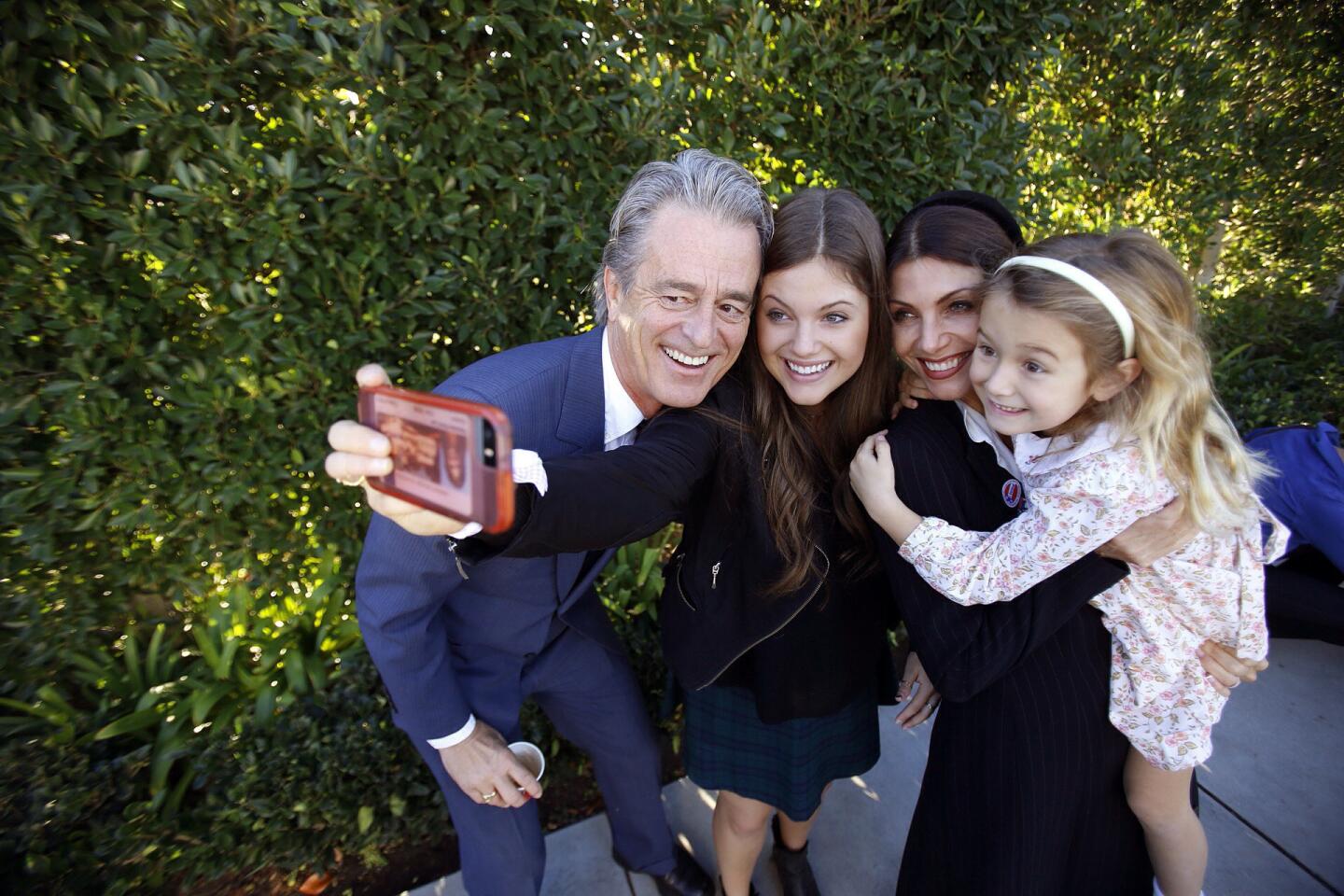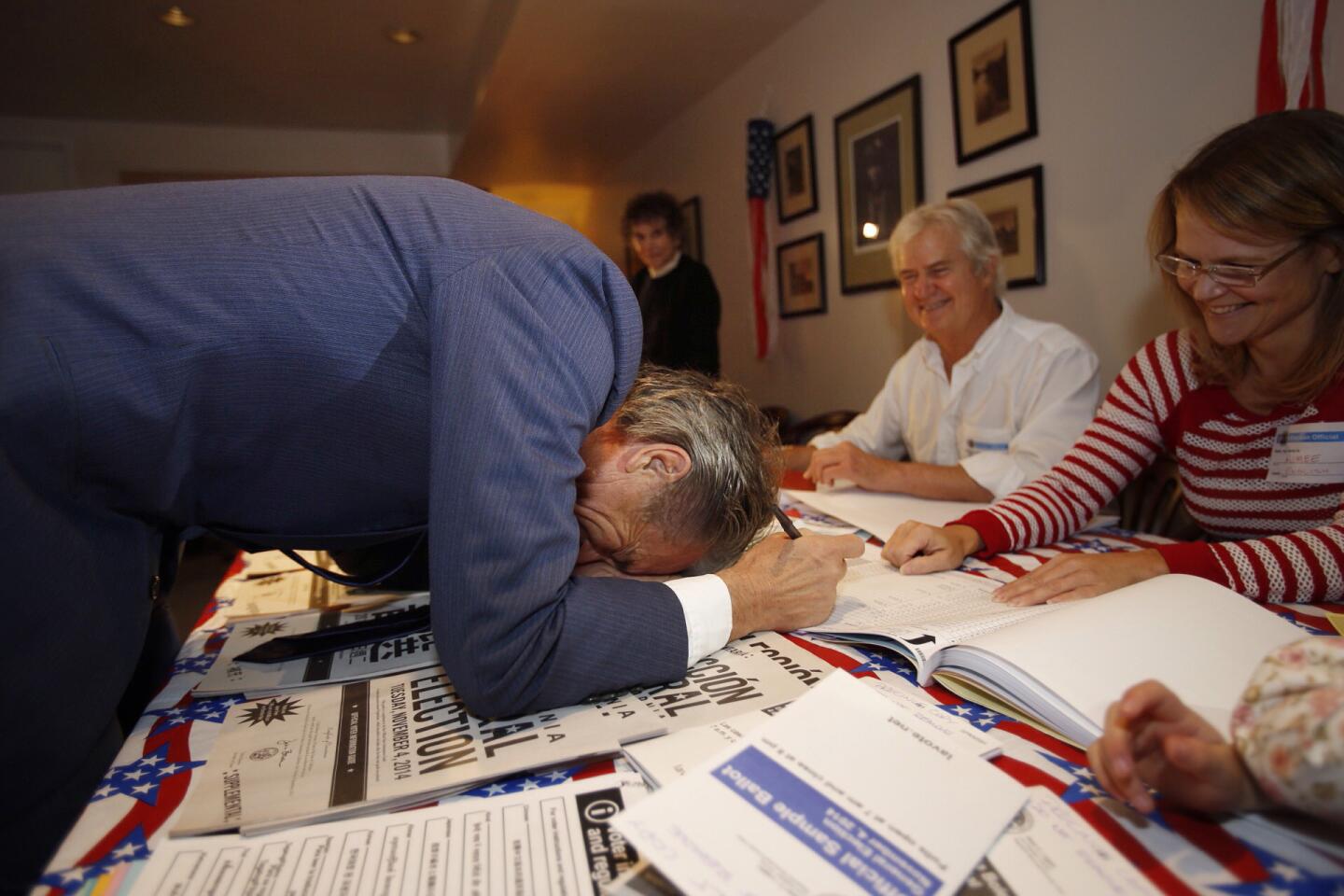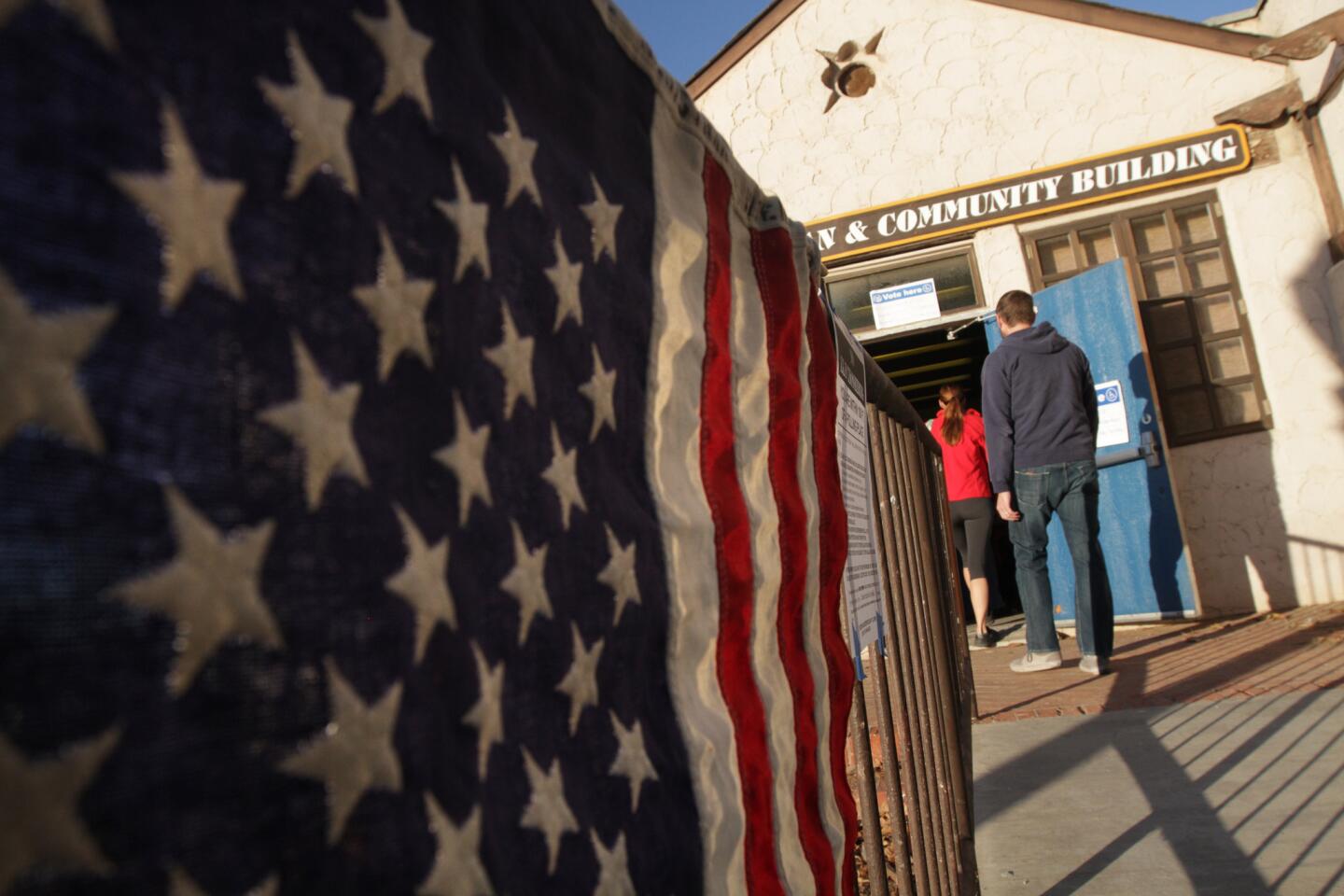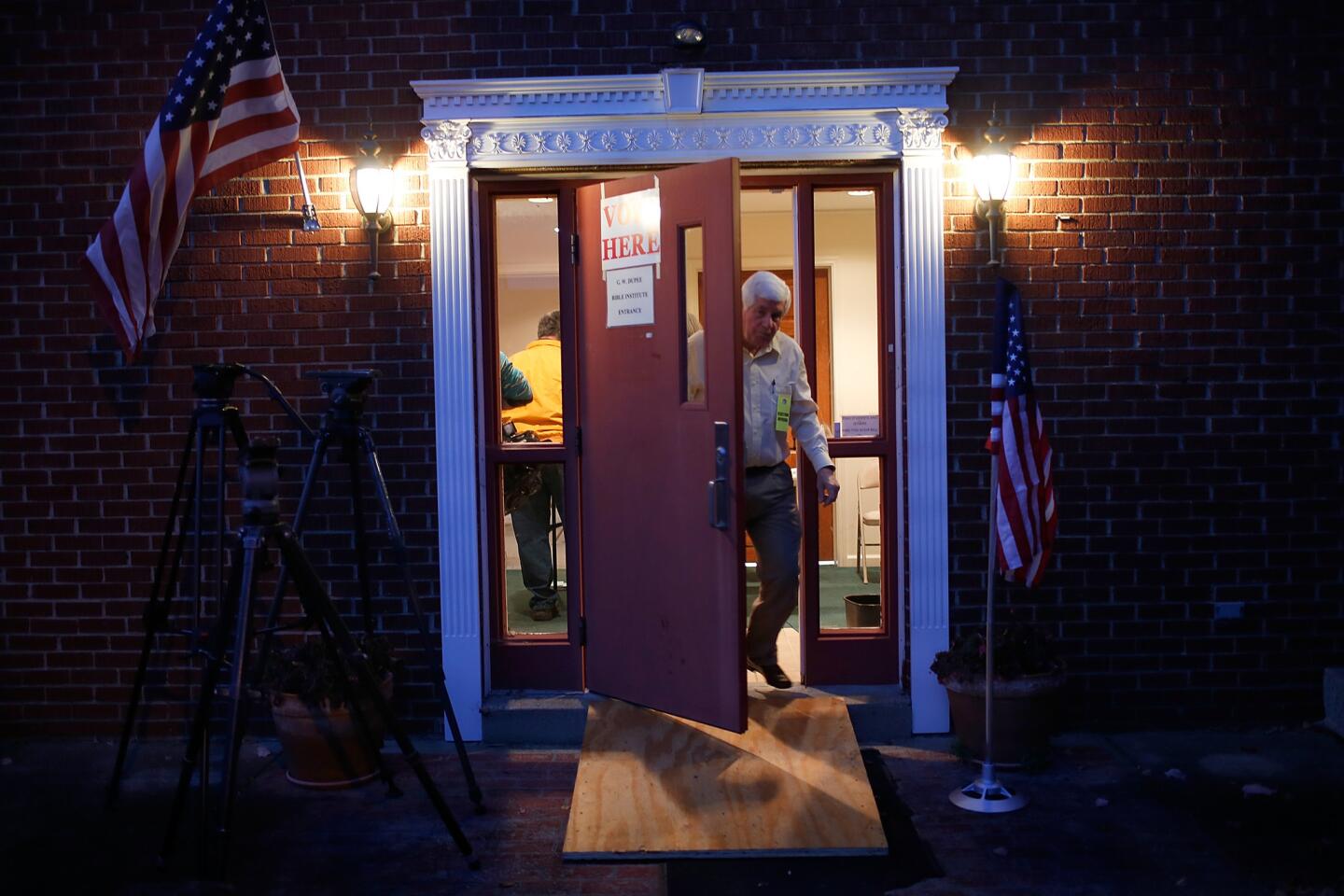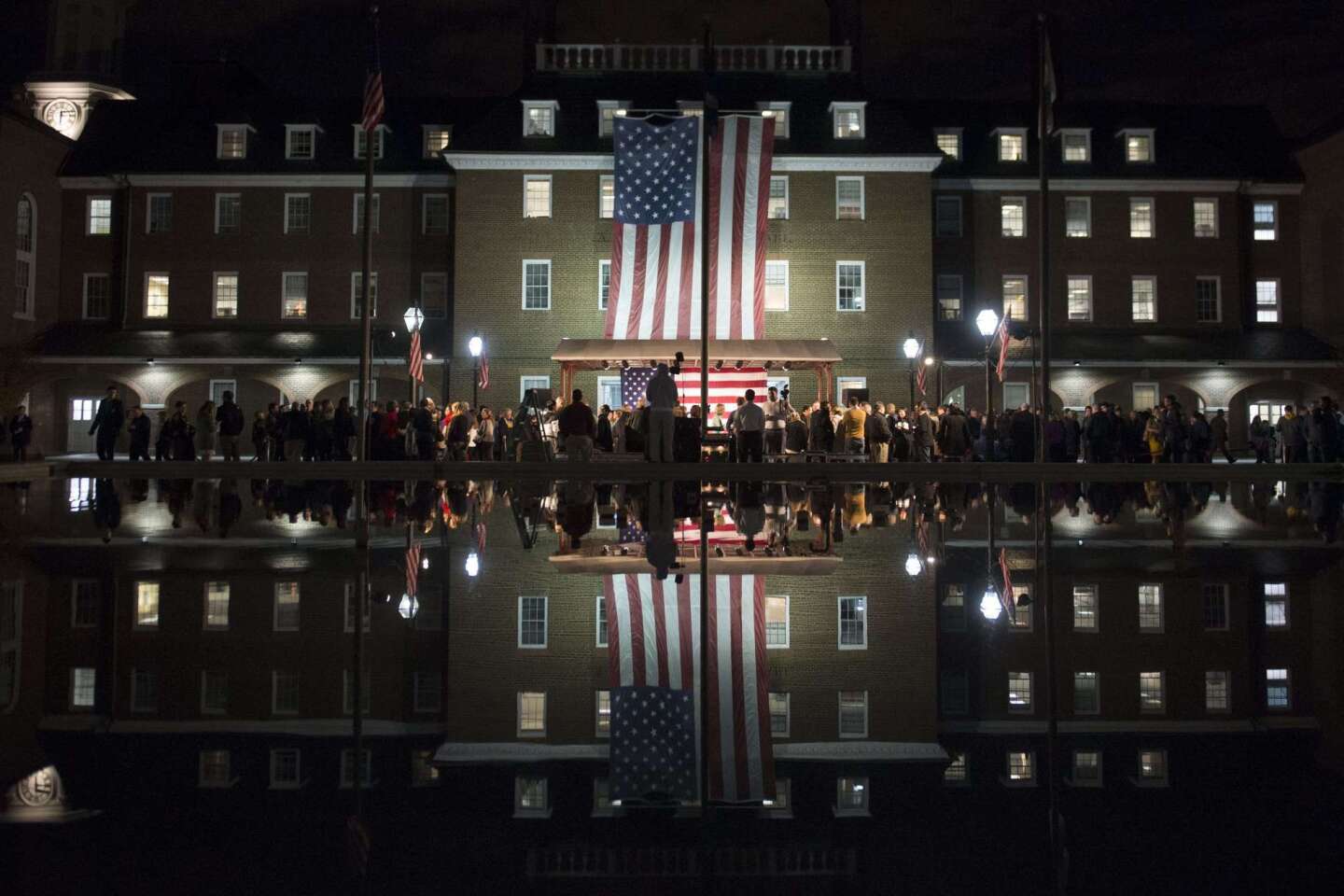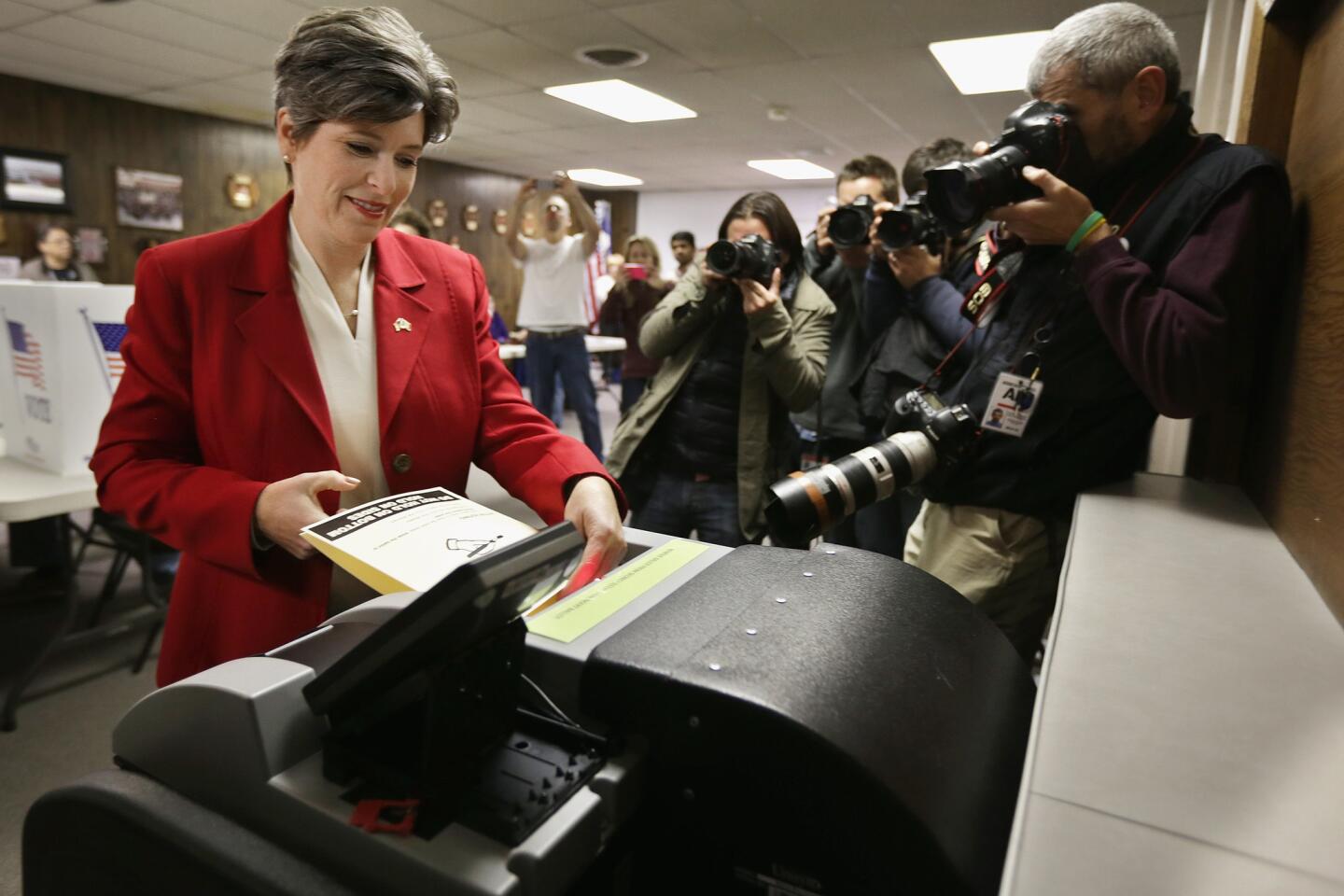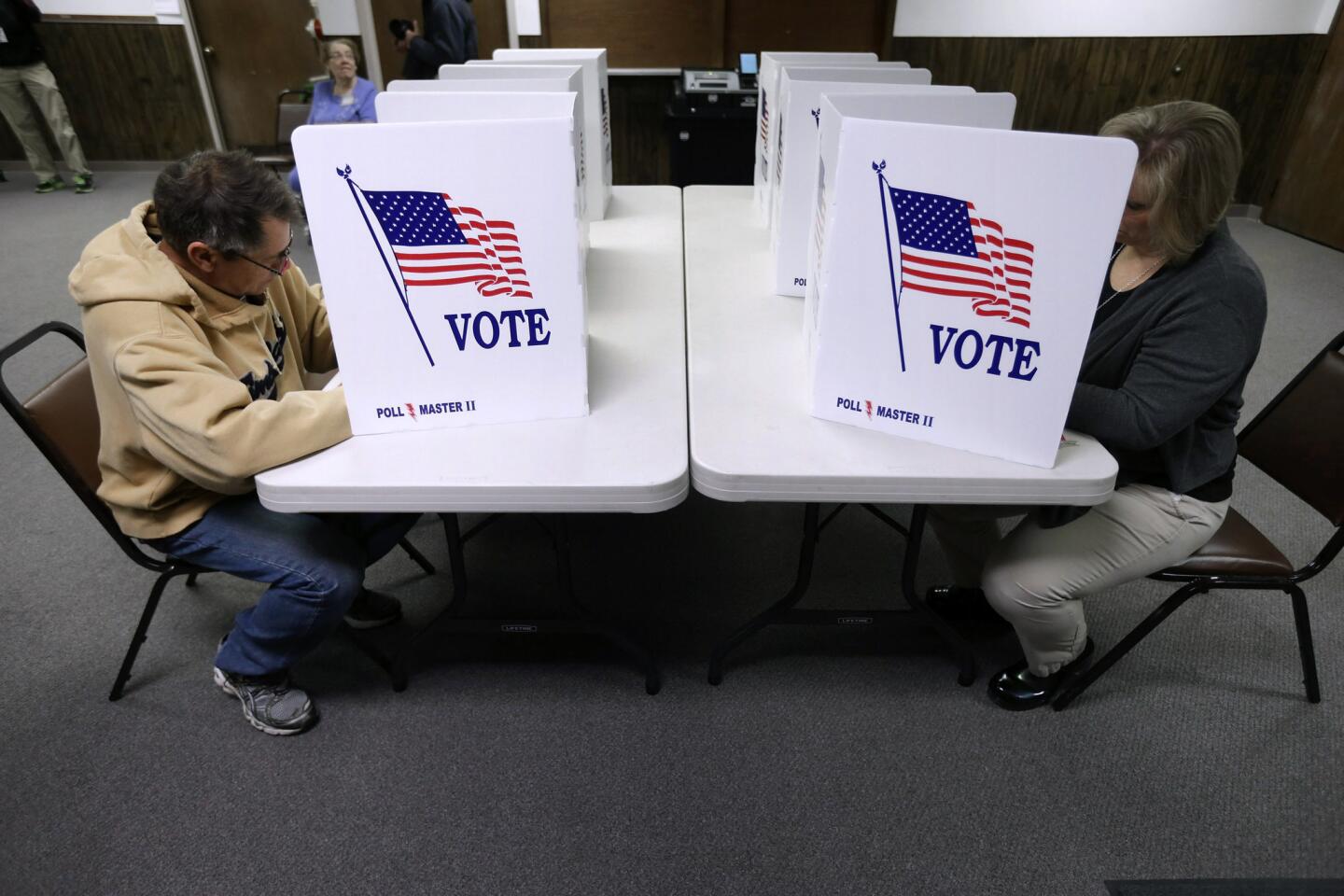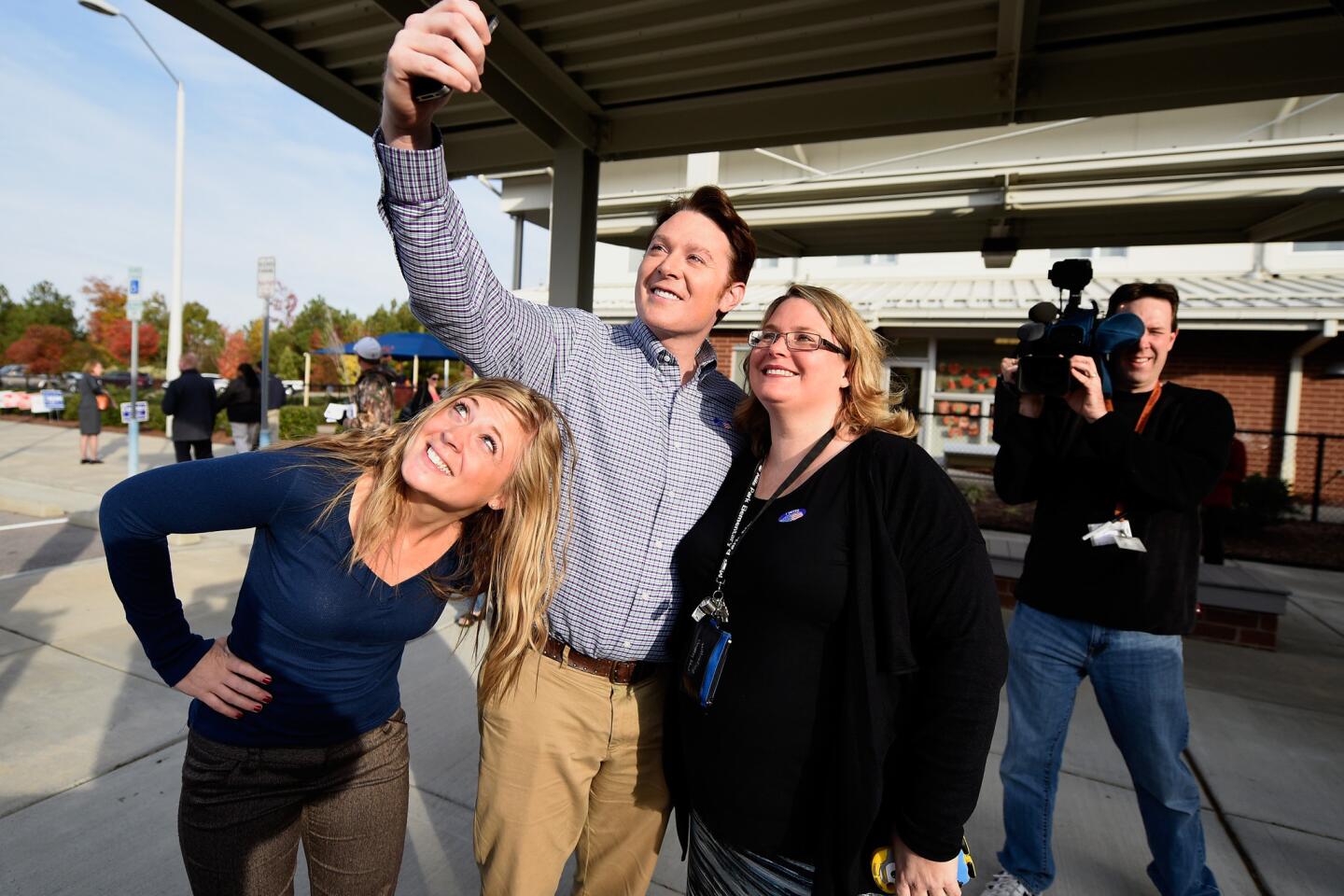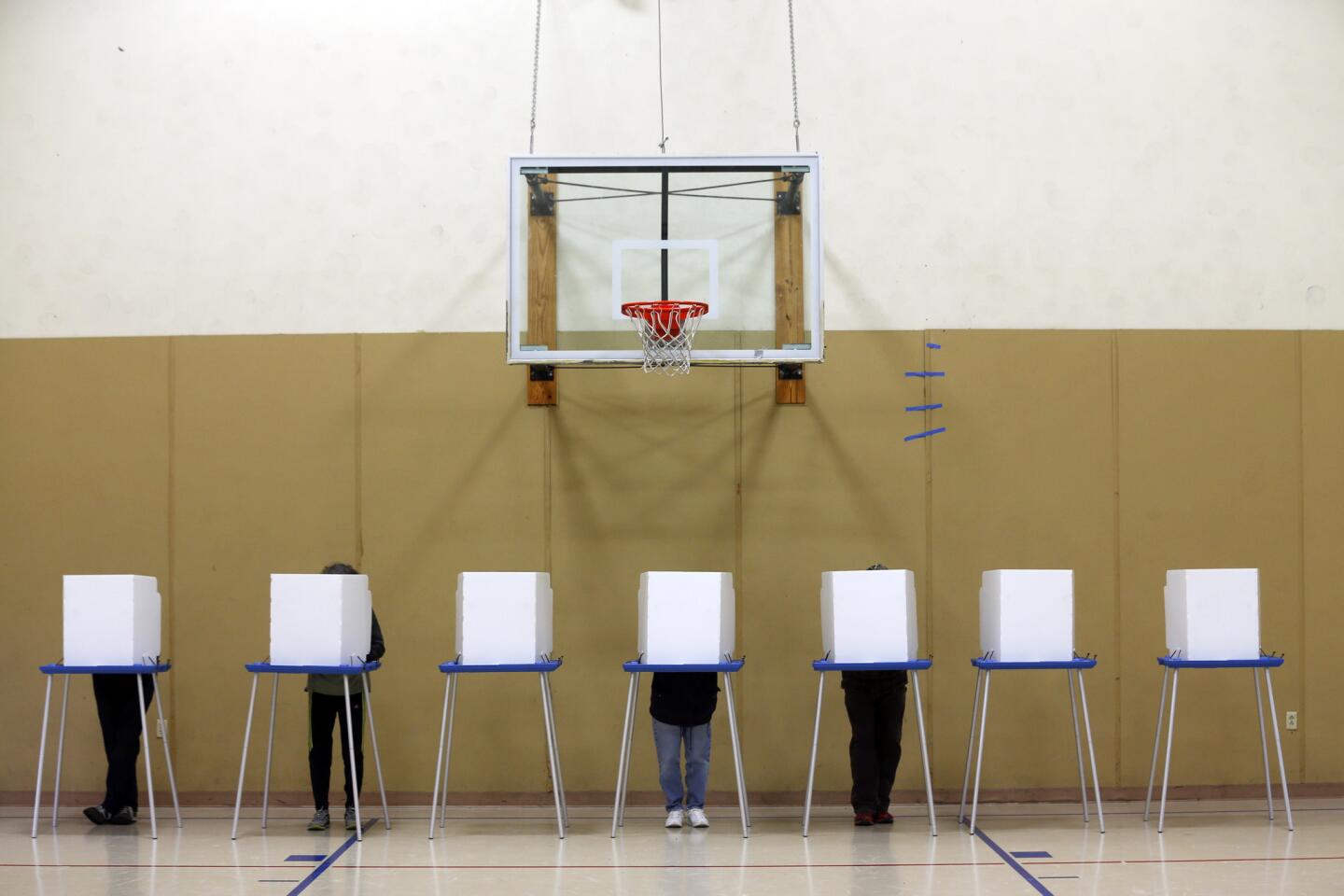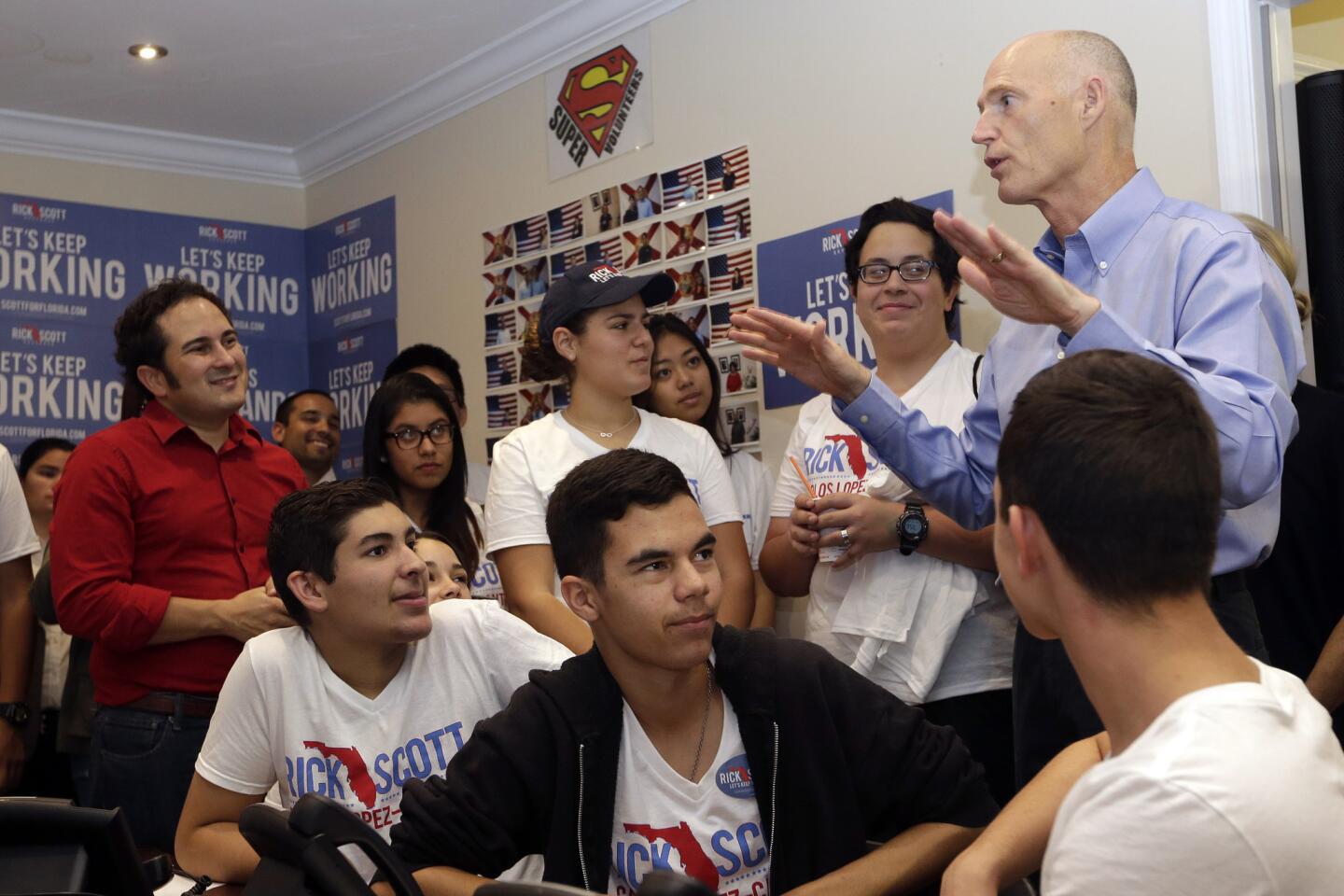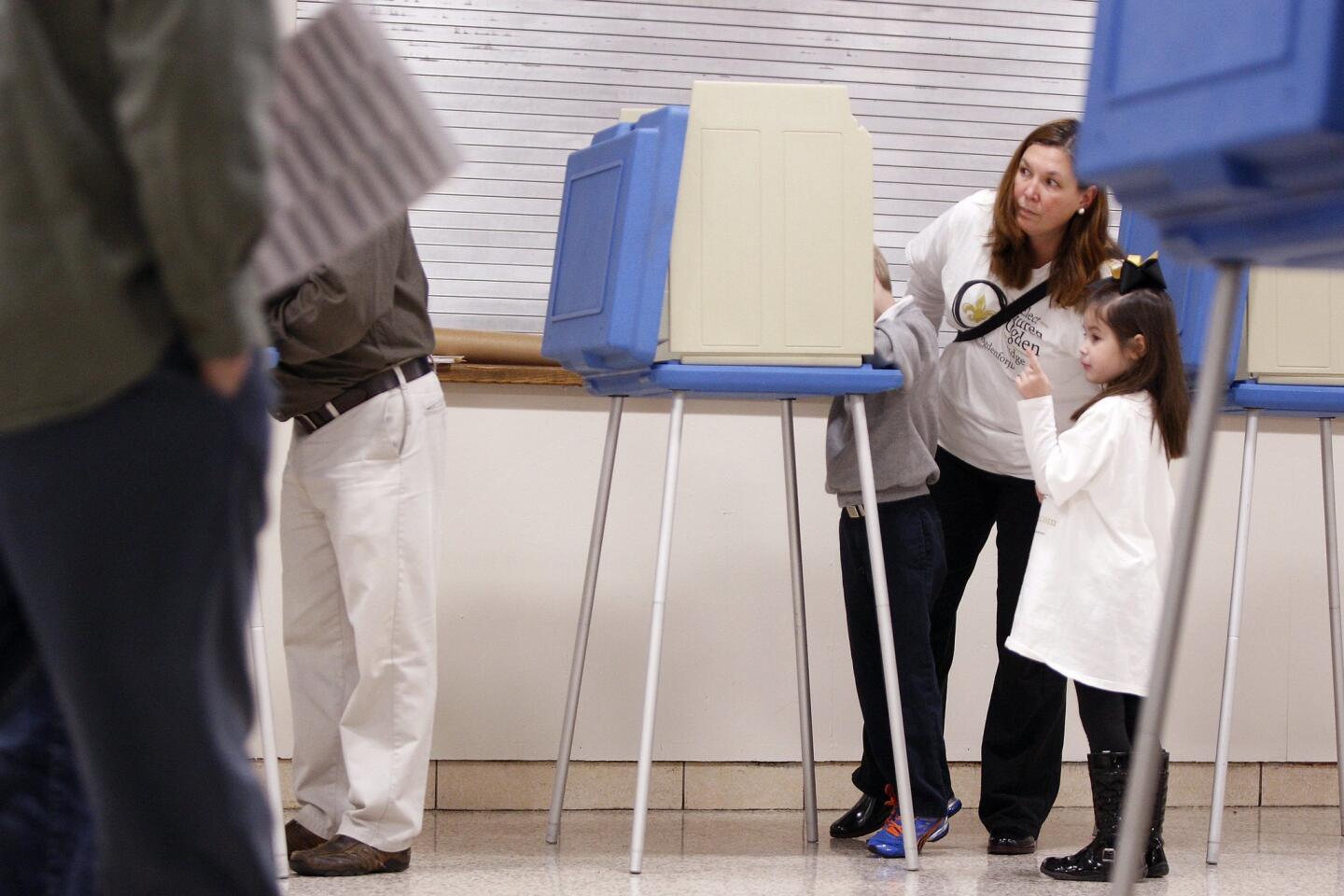Democrats sign up thousands of new voters, but will they cast ballots?
- Share via
Democrats in California have signed up tens of thousands of new voters in recent months, but a big question in Tuesday’s election is whether enough of them will cast ballots to stave off erosion of the party’s dominance in the state.
The new voters, many of them Latino or Asian, are heavily concentrated in fiercely contested legislative districts in Orange and Ventura counties, the South Bay, and the Antelope and San Joaquin valleys. Fearing that a national election climate favoring Republicans could cost them legislative seats, Democrats dispatched hundreds of troops to register new voters in those areas.
Adding to Democrats’ worries have been a lackluster governor’s race and a menu of less-than-alluring ballot measures, all but ensuring a low-turnout election — which typically draws a disproportionately large share of older white voters who lean Republican.
“There’s nothing sexy on the ballot,” said Sergio Carrillo, an advisor to Democrat Tony Mendoza in his pitched battle for an eastern Los Angeles County state Senate seat that would normally be out of reach for Republicans.
Most Democrats running for statewide office — Gov. Jerry Brown, Lt. Gov. Gavin Newsom and Atty. Gen. Kamala Harris among them — appear to have little to fear Tuesday, polls show. The party’s secretary of state candidate, state Sen. Alex Padilla of Pacoima, is the one who appears to face the most serious challenge from a Republican rival, Pepperdine University think tank director Pete Peterson.
Democrats are also certain to maintain a strong majority of the state’s congressional delegation, although a few of the most hard-fought U.S. House races in the country are in California. Voters in San Diego, Ventura and Sacramento counties have been swamped by mail and other advertising in those contests.
But Republicans are all but sure to maintain their House majority; the question is by how big a margin.
The stakes are arguably higher in the California Legislature. Democrats are trying to regain their two-thirds supermajority in the Senate and maintain the one they have in the Assembly. A supermajority enables Democrats to raise taxes and put some ballot measures before voters with no Republican support, among other things.
Republicans acknowledge the Democrats’ heavy investment in registration drives could prove a formidable threat Tuesday — but not if the new voters don’t bother to cast ballots.
“The biggest obstacle for them remains: Can they get those new voters to the polls?” said Peter DeMarco, a spokesman for state Senate Republican leader Bob Huff (R-Diamond Bar).
Polls are open from 7 a.m. to 8 p.m. Most voters, though, are likely to cast their ballots by mail. Republicans are encouraged that in some key districts, GOP voters are returning their mail ballots at a higher rate than Democrats — despite the surge in newly registered Democrats.
“It doesn’t appear that they’re voting,” GOP consultant Matt Rexroad said, referring to information posted daily by Political Data, a nonpartisan firm that tracks voting patterns.
In the state Senate race pitting Mendoza against Downey Mayor Mario Guerra, a Republican, volunteers on both sides fanned out across the district Monday, placing fliers on doorknobs.
“People have made their decisions,” Guerra said. “Now it’s getting them out to vote.”
Some high-profile local contests are taking place Tuesday, but none with the capacity to attract large numbers of voters.
In Los Angeles County, corruption scandals have produced spirited contests for sheriff and county assessor. And the $9.5-million contest to succeed Supervisor Zev Yaroslavsky, who is retiring, has shaped up as a labor versus business duel between former state lawmaker Sheila Kuehl, the union favorite, and onetime Santa Monica Mayor Bobby Shriver.
Statewide, TV advertising has focused mainly on the contest for state schools superintendent and Propositions 45 and 46, both healthcare and insurance measures.
Contests for governor or U.S. Senate normally inspire relatively high turnout in statewide elections in non-presidential years. But Brown is so heavily favored for reelection over GOP rival Neel Kashkari that he has declined to run TV ads asking for support, sticking instead to spots urging voters to pass Propositions 1 and 2, a water bond measure and budget savings package, respectively.
As a whole, said Political Data Vice President Paul Mitchell, it’s not the kind of ballot likely to spark the enthusiasm of many voters.
“They’re not waking up in the morning thinking, ‘I wonder what’s going to happen in the superintendent of public instruction race,’ ” Mitchell said.
For Democrats, a key task — now that it’s too late to post ballots in the mail and be sure they arrive before the Tuesday deadline — is to watch that voters drop off absentee ballots at polling places instead.
“You do three-fourths of the job by registering someone, but you definitely have to make sure they understand how to vote,” said Kathy Bowler, a Democratic operative who oversaw some of the party’s voter signup work.
Since the last gubernatorial election four years ago, the registration drive helped add more than 88,000 Democrats to the voter rolls, while the number of Republicans dropped by 350,000. But nearly 647,000 other new voters declined to state a preference for any party.
Twitter: @finneganLAT
Times staff writers Seema Mehta, Catherine Saillant and Abby Sewell contributed to this report.
More to Read
Sign up for Essential California
The most important California stories and recommendations in your inbox every morning.
You may occasionally receive promotional content from the Los Angeles Times.


